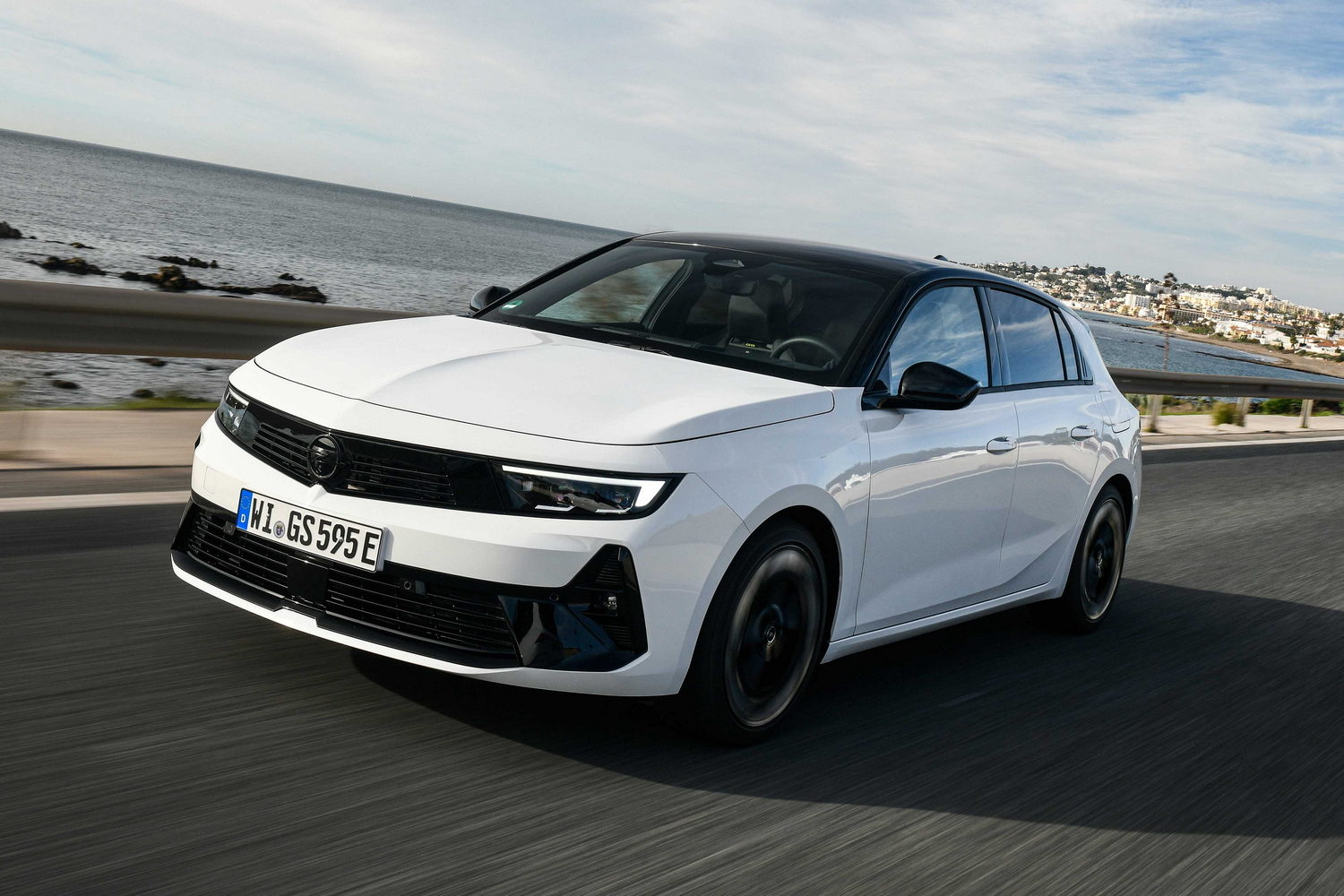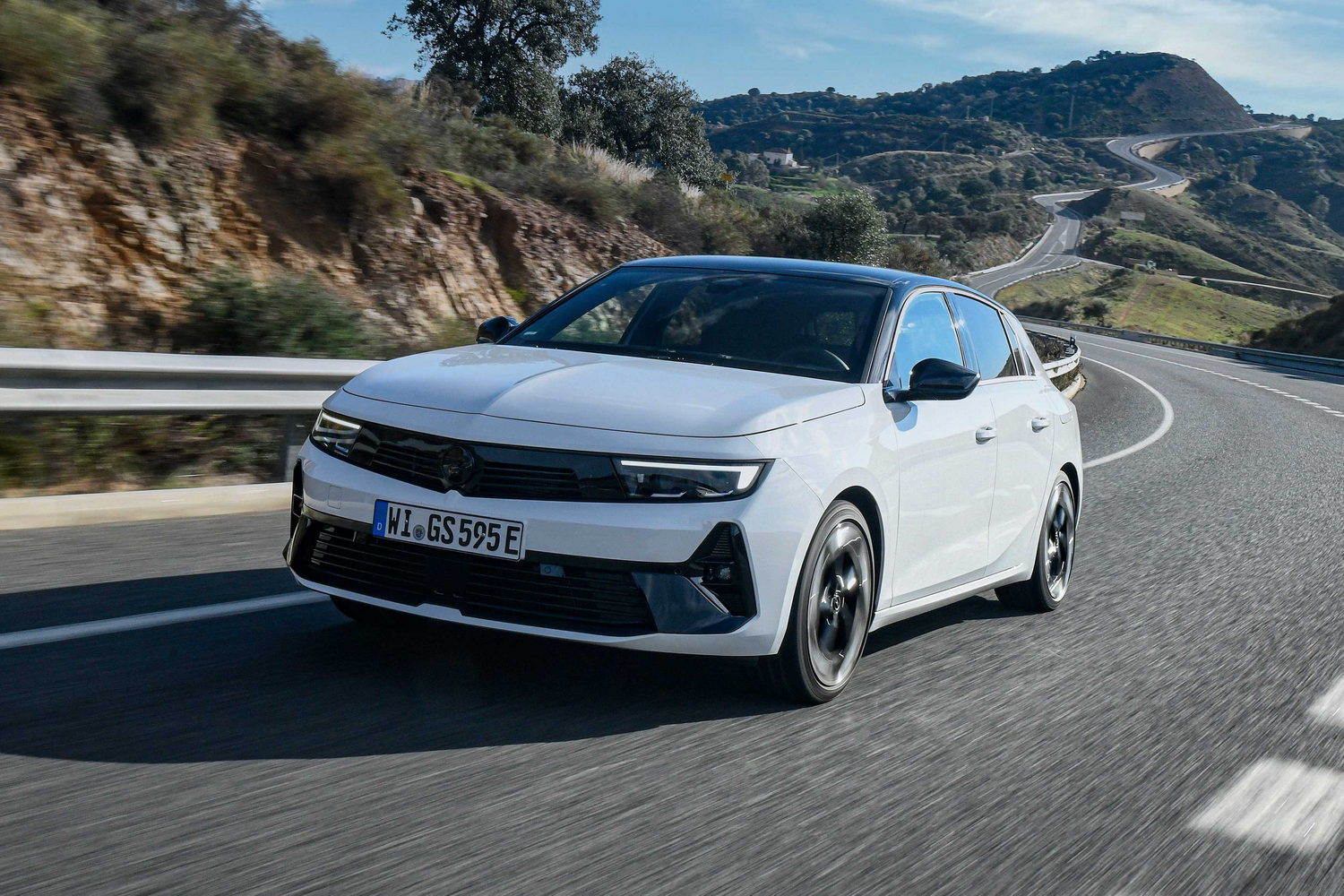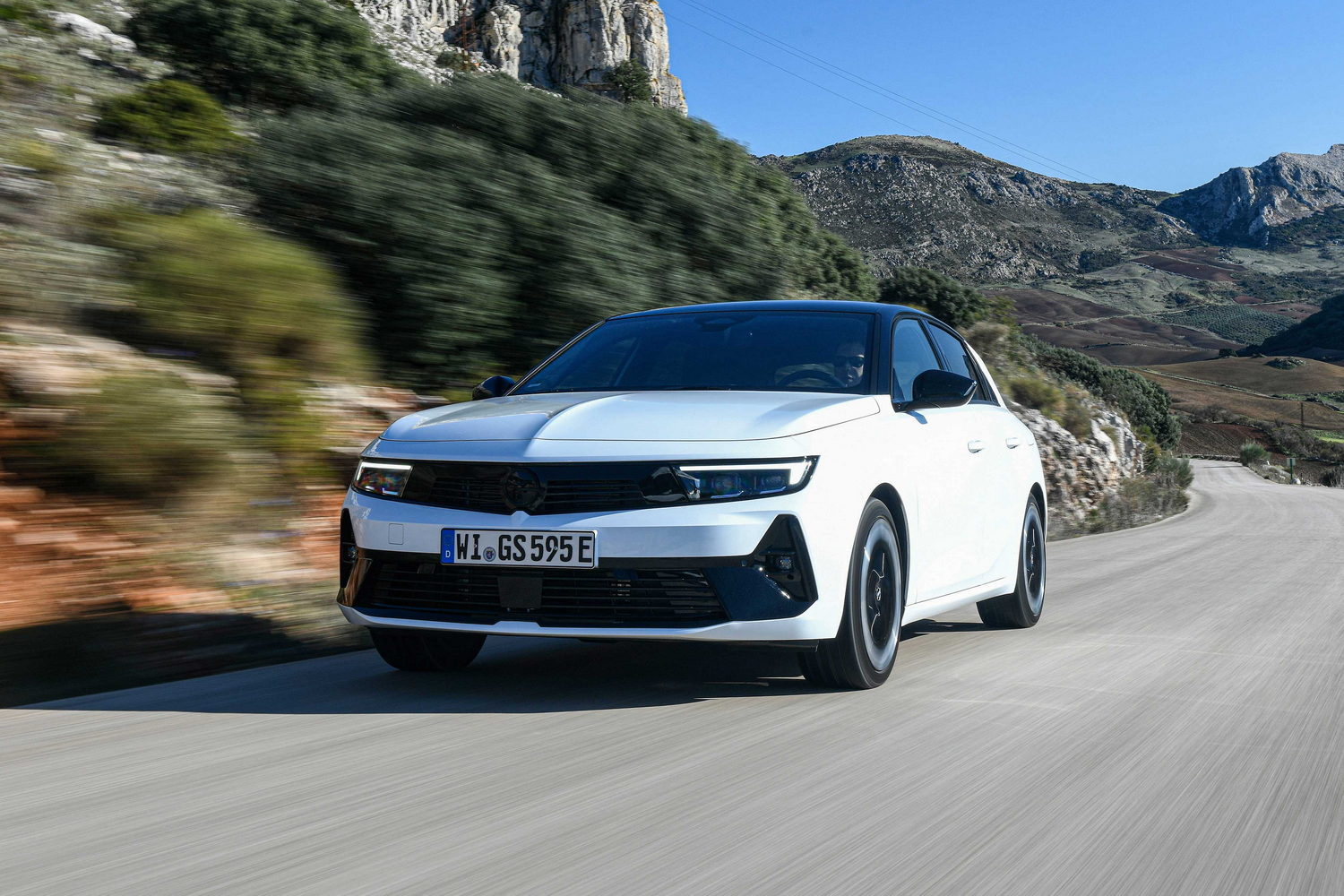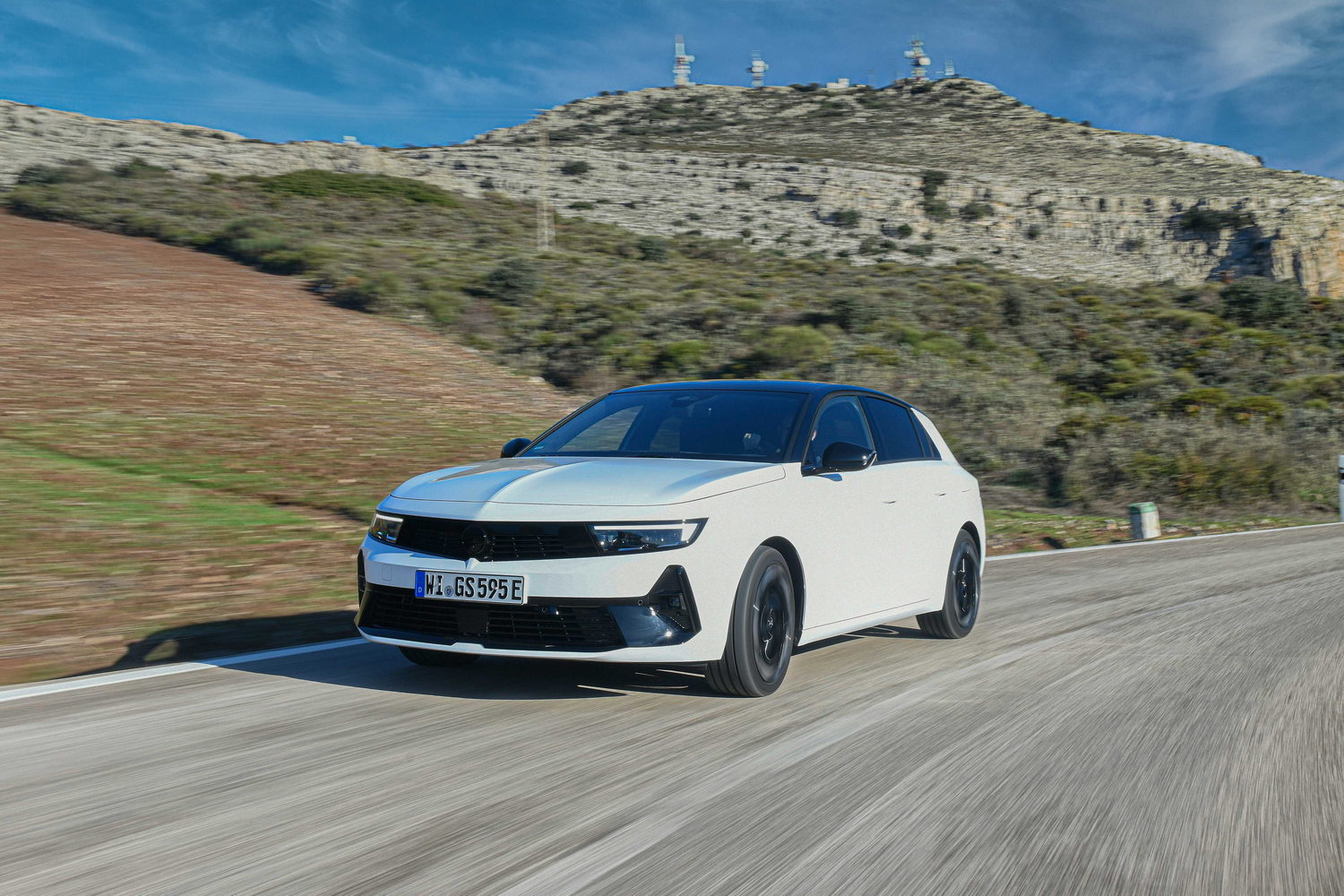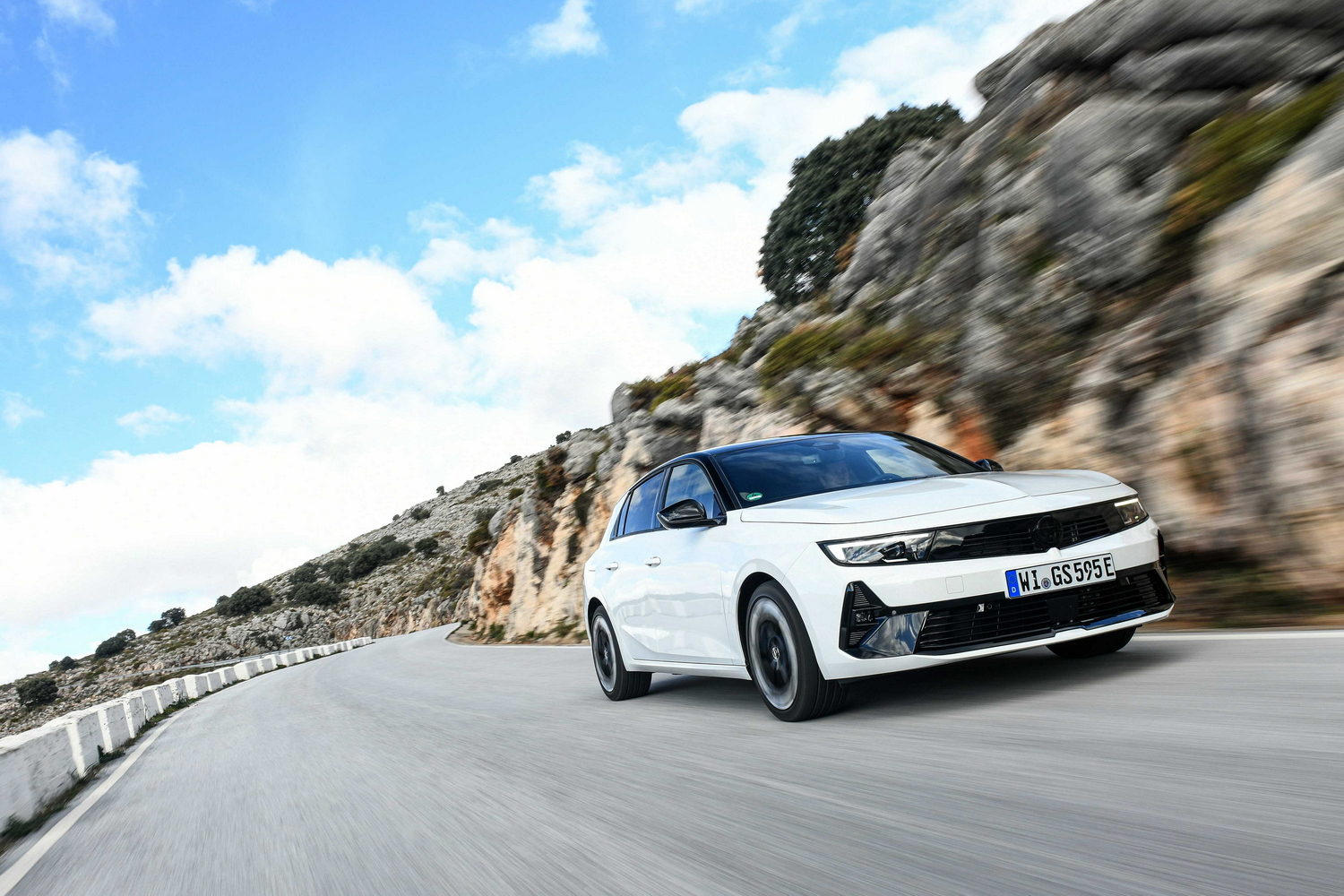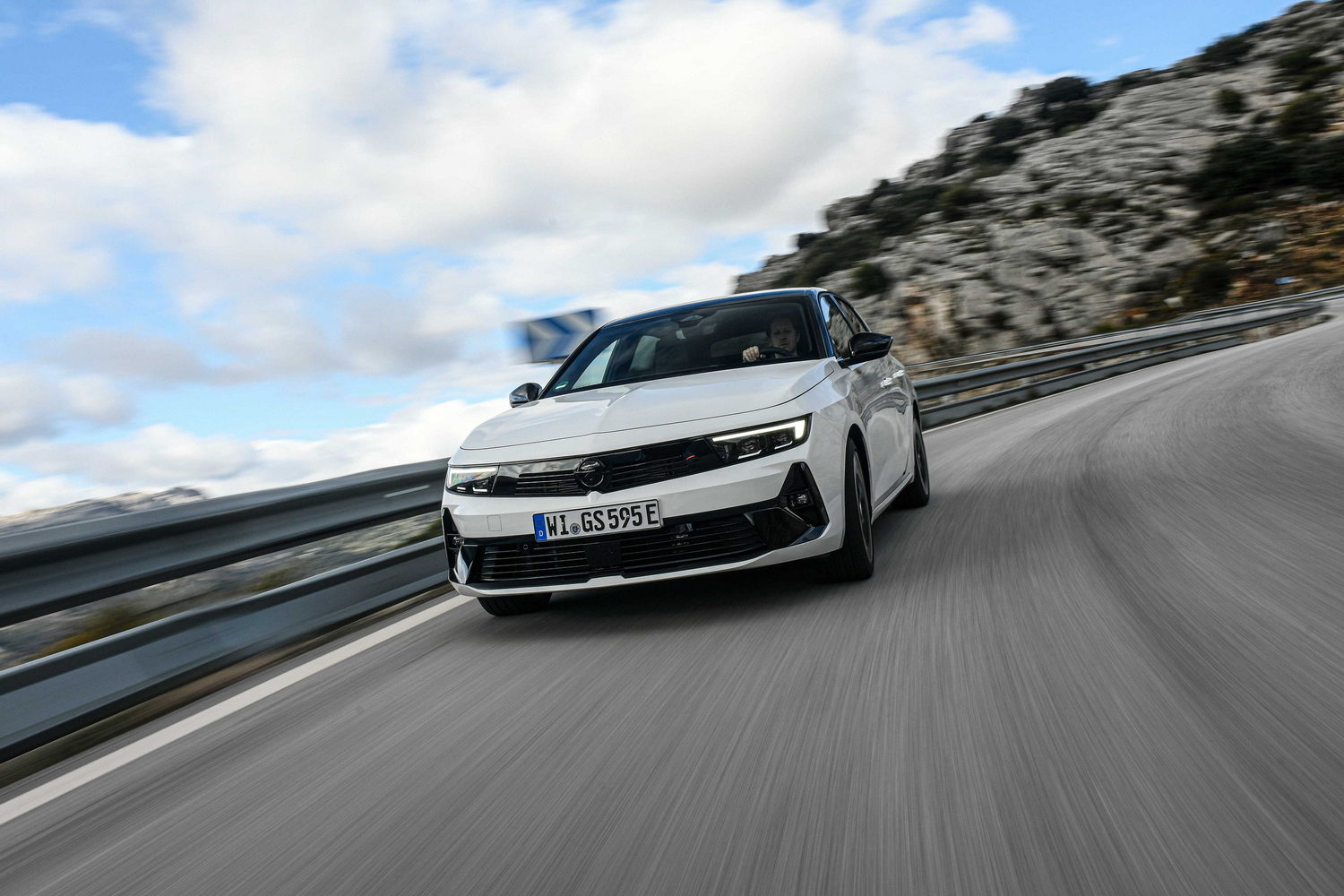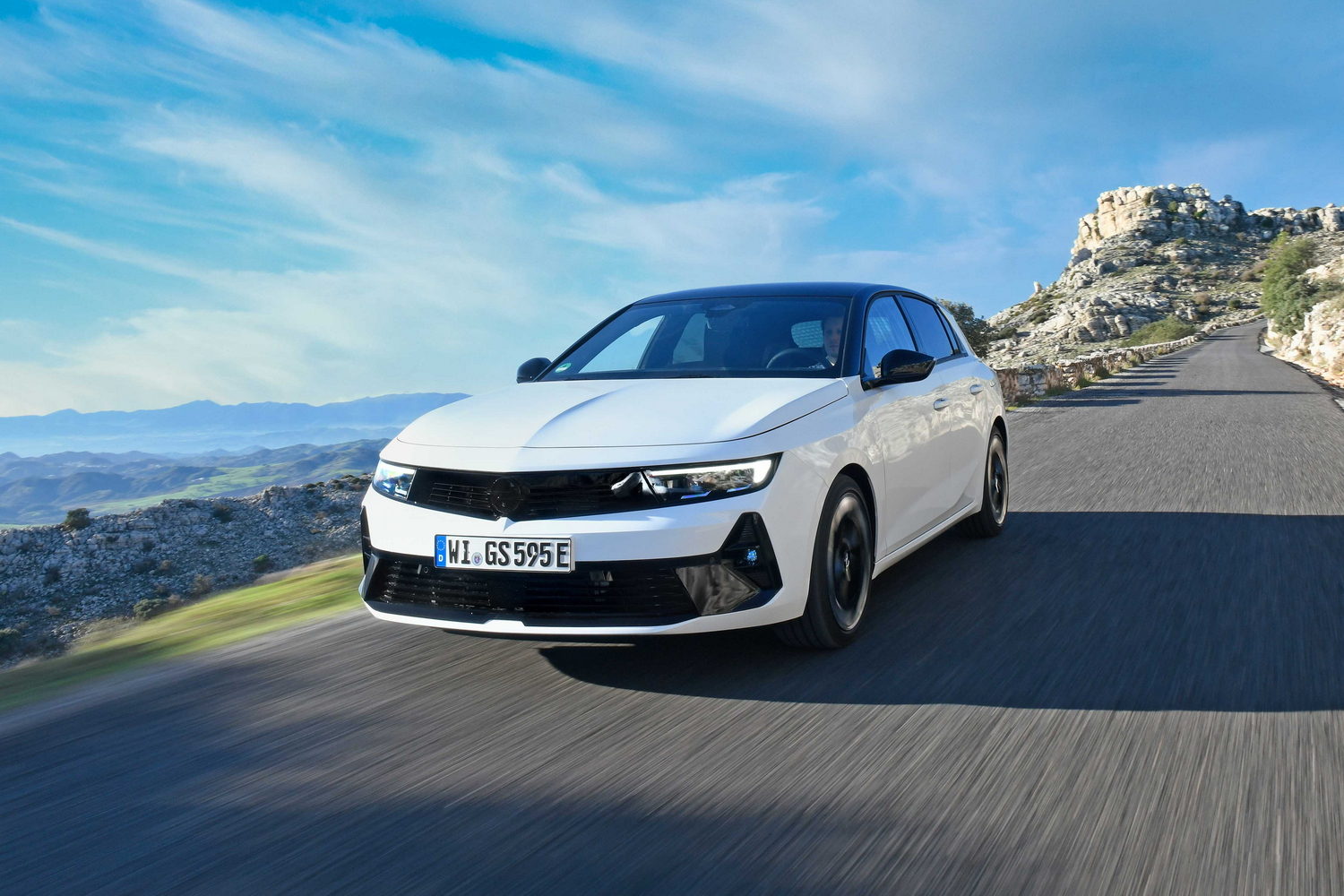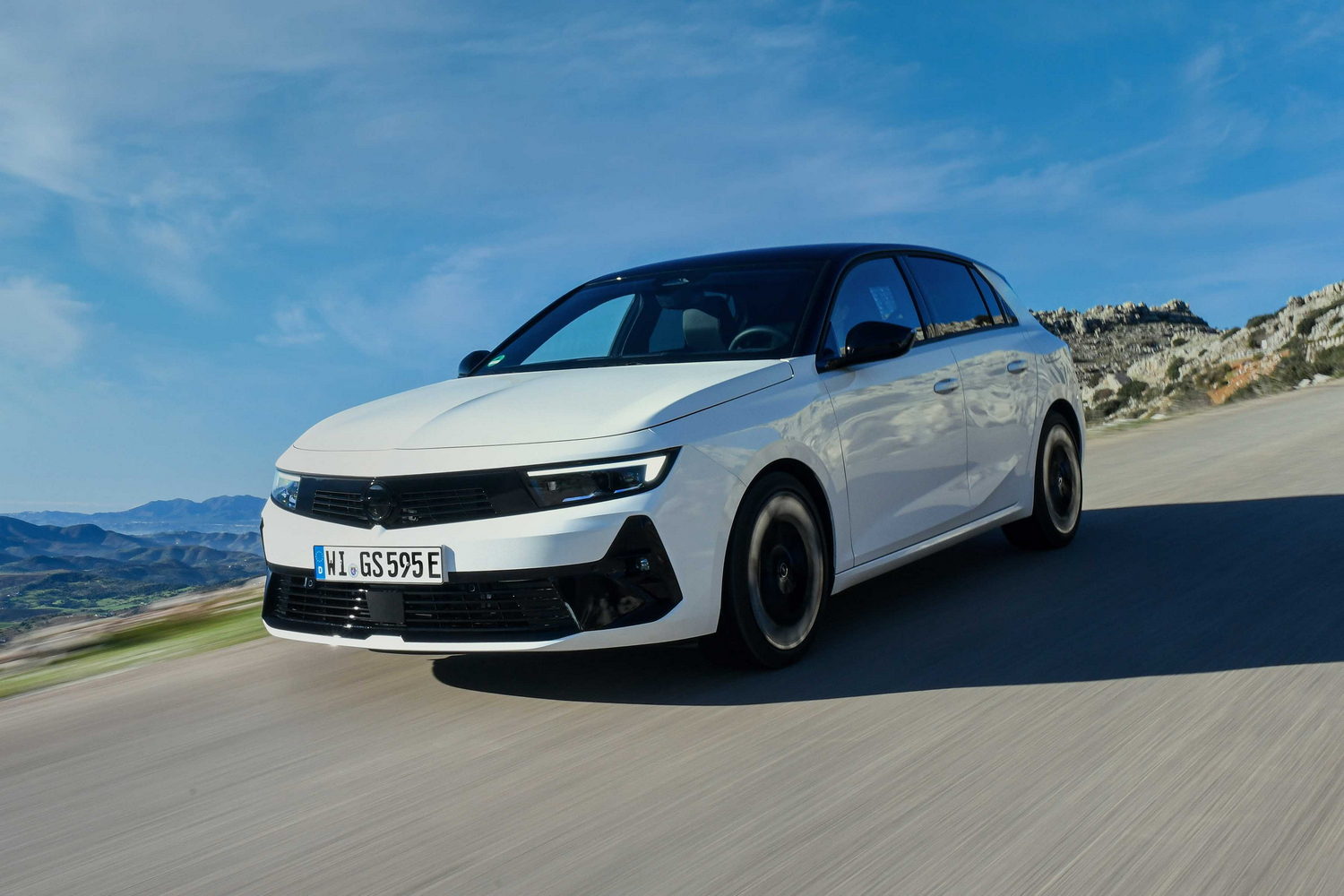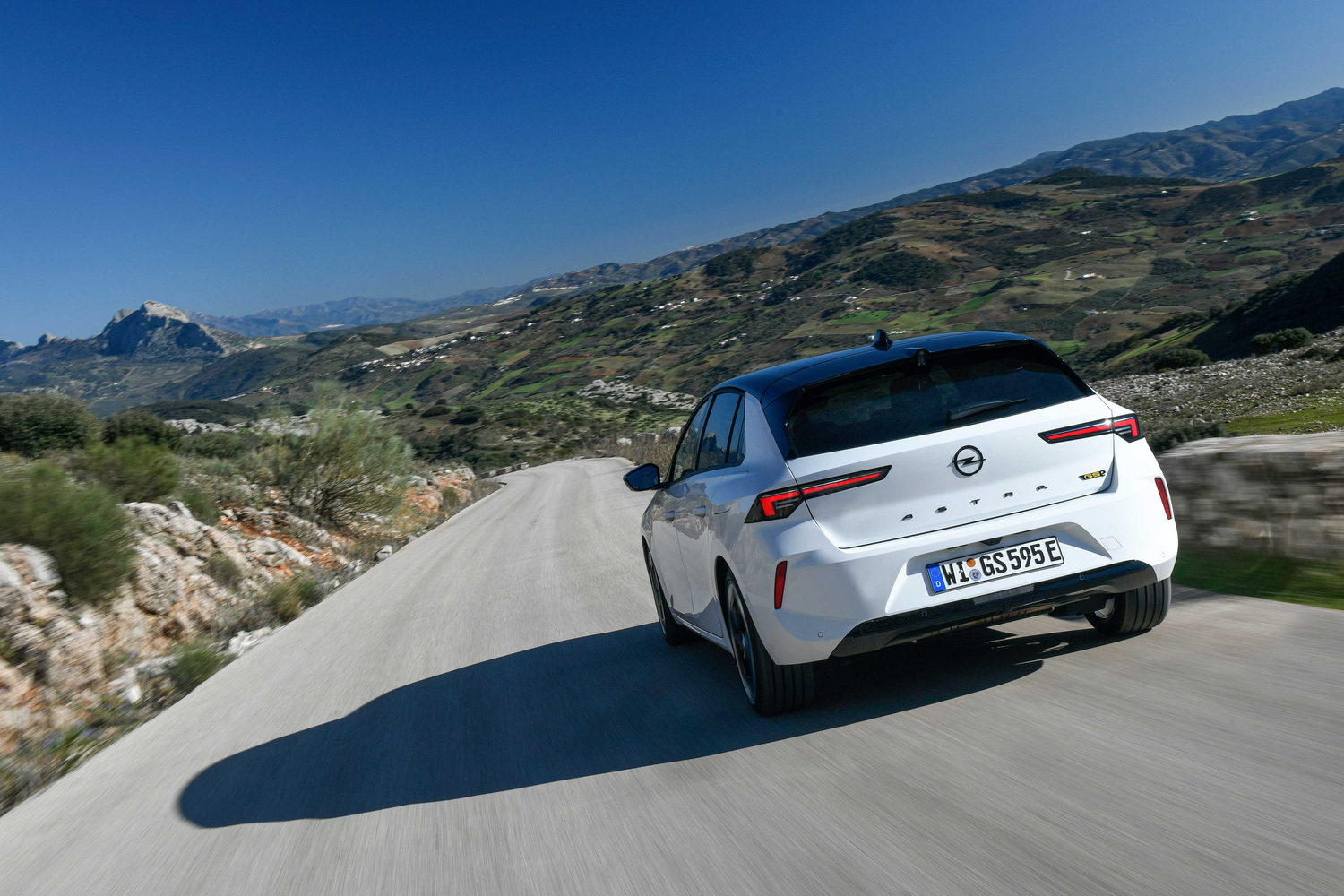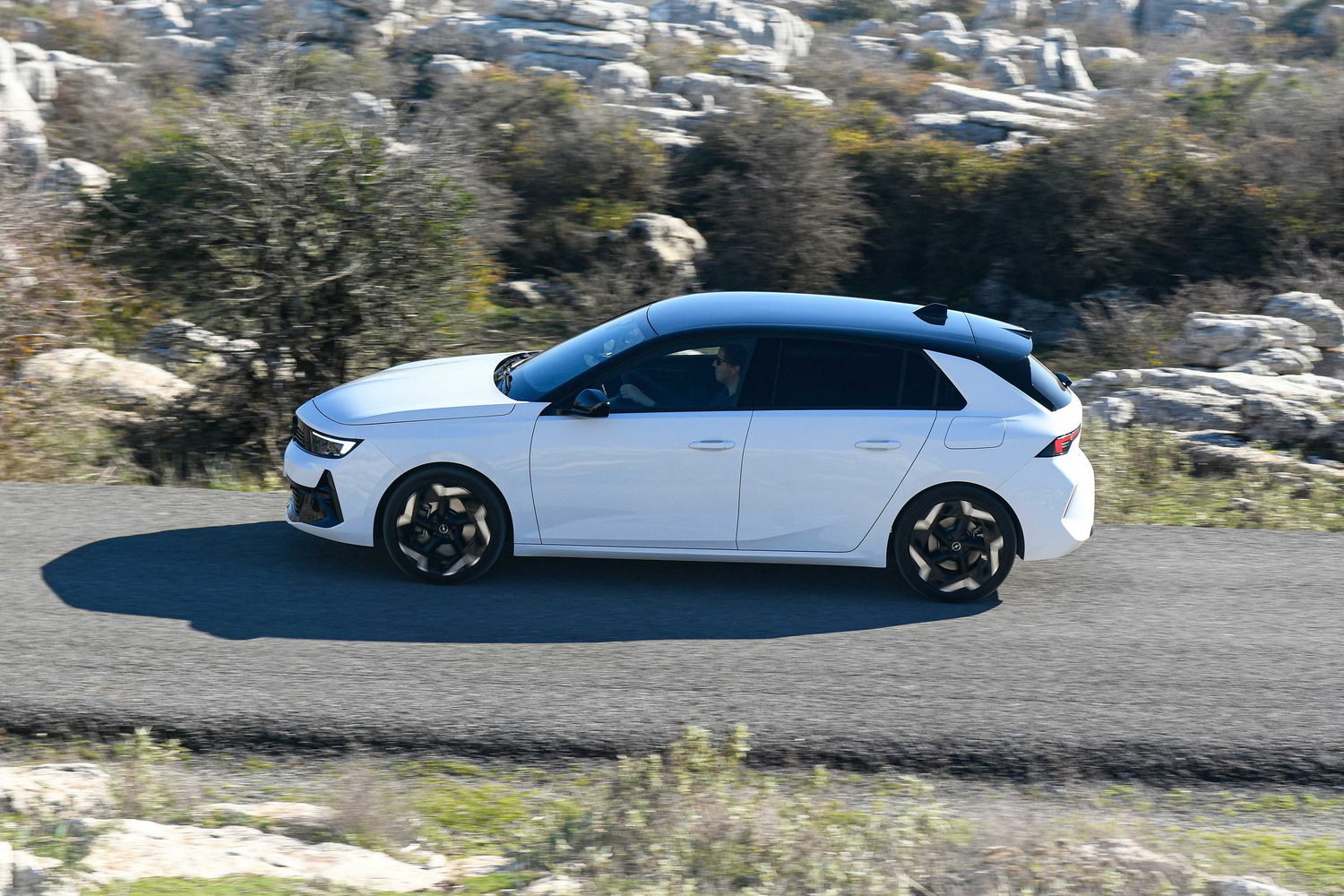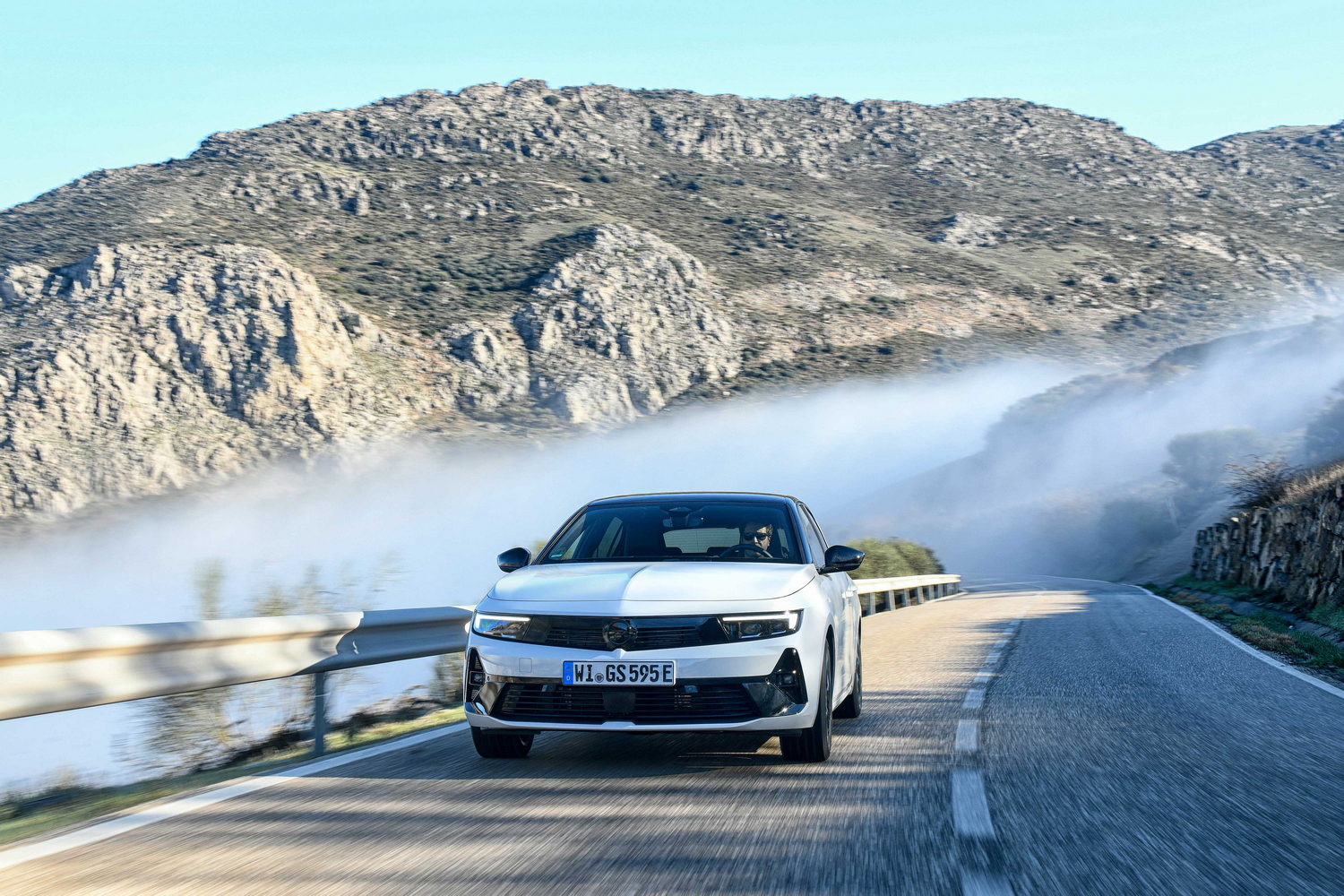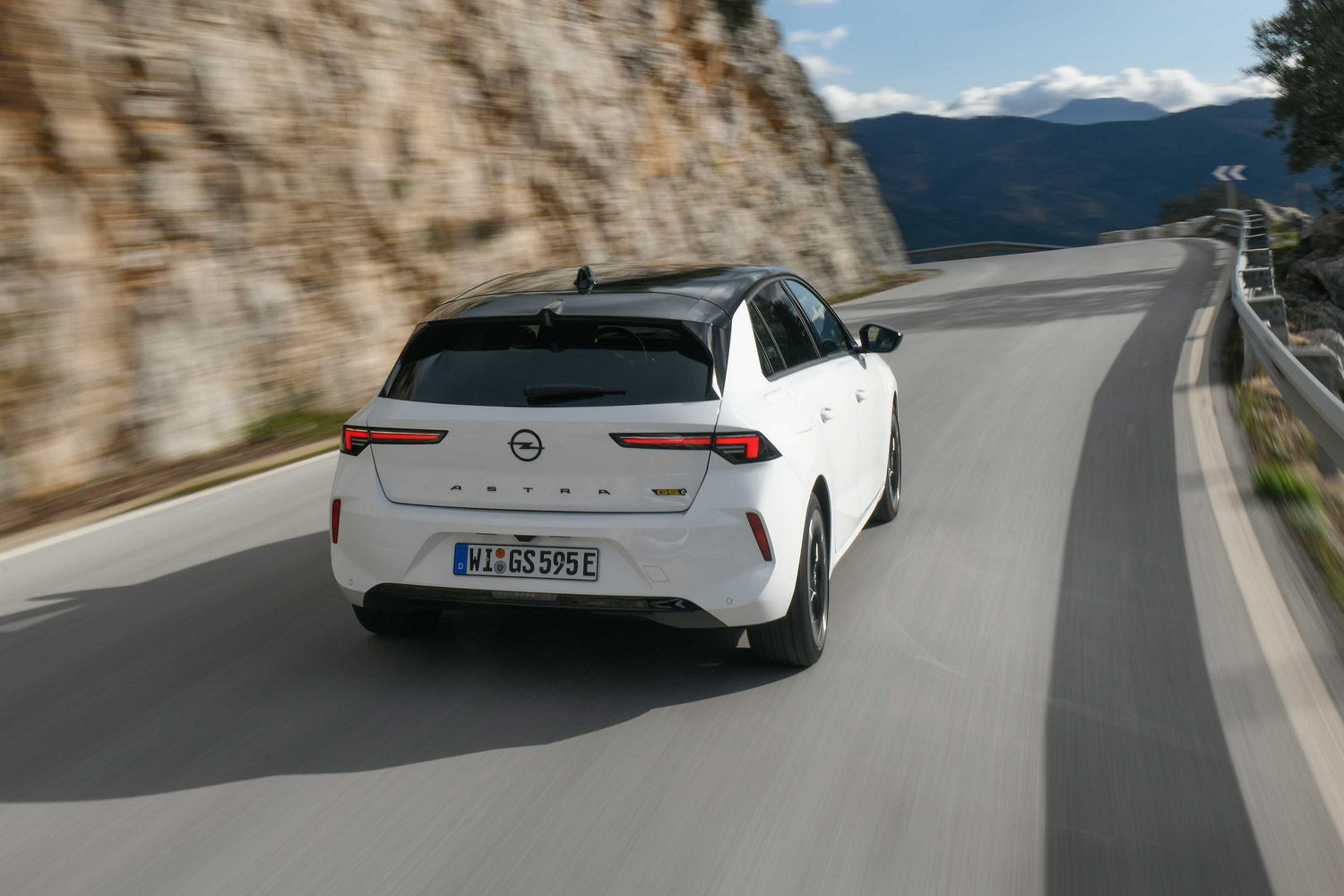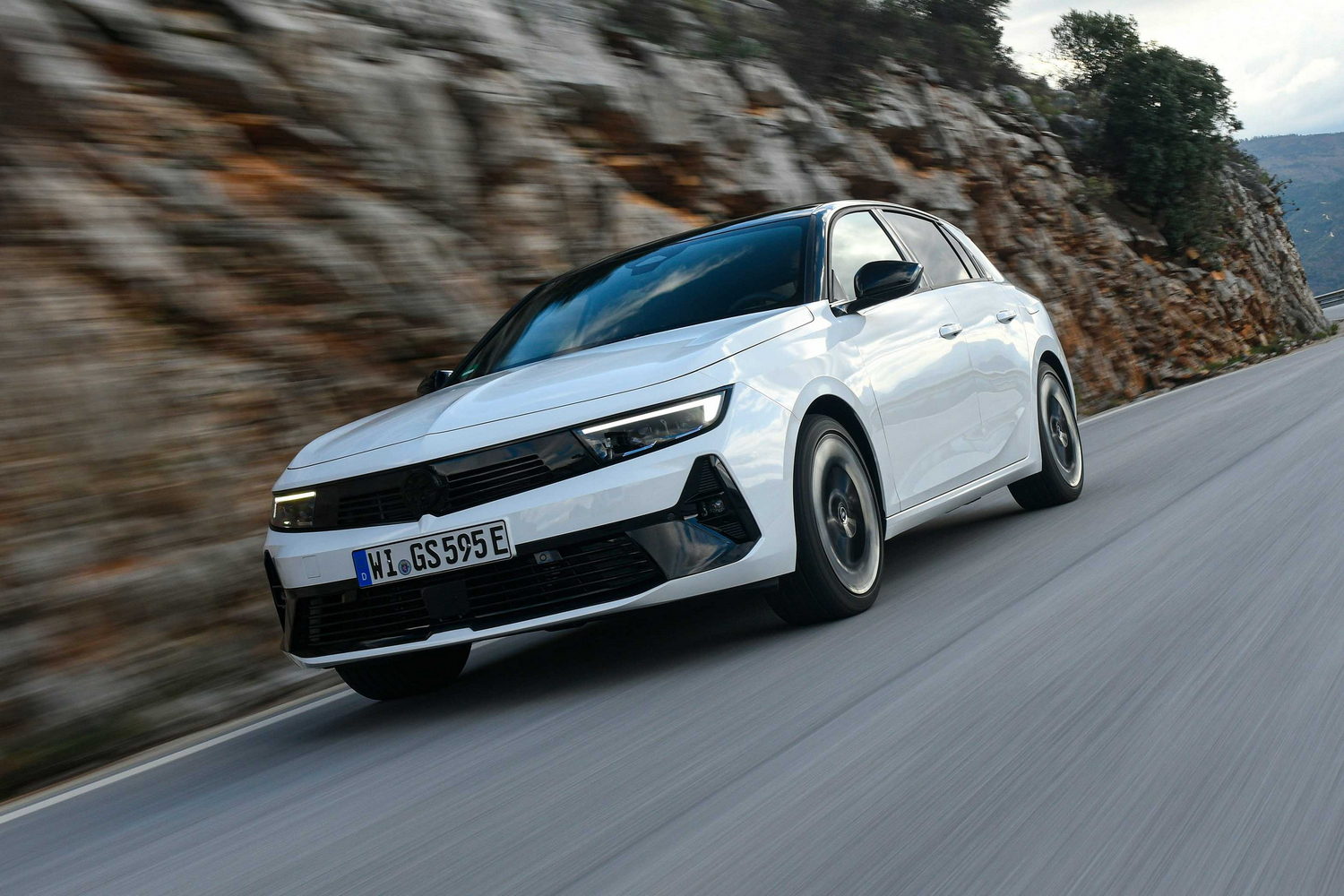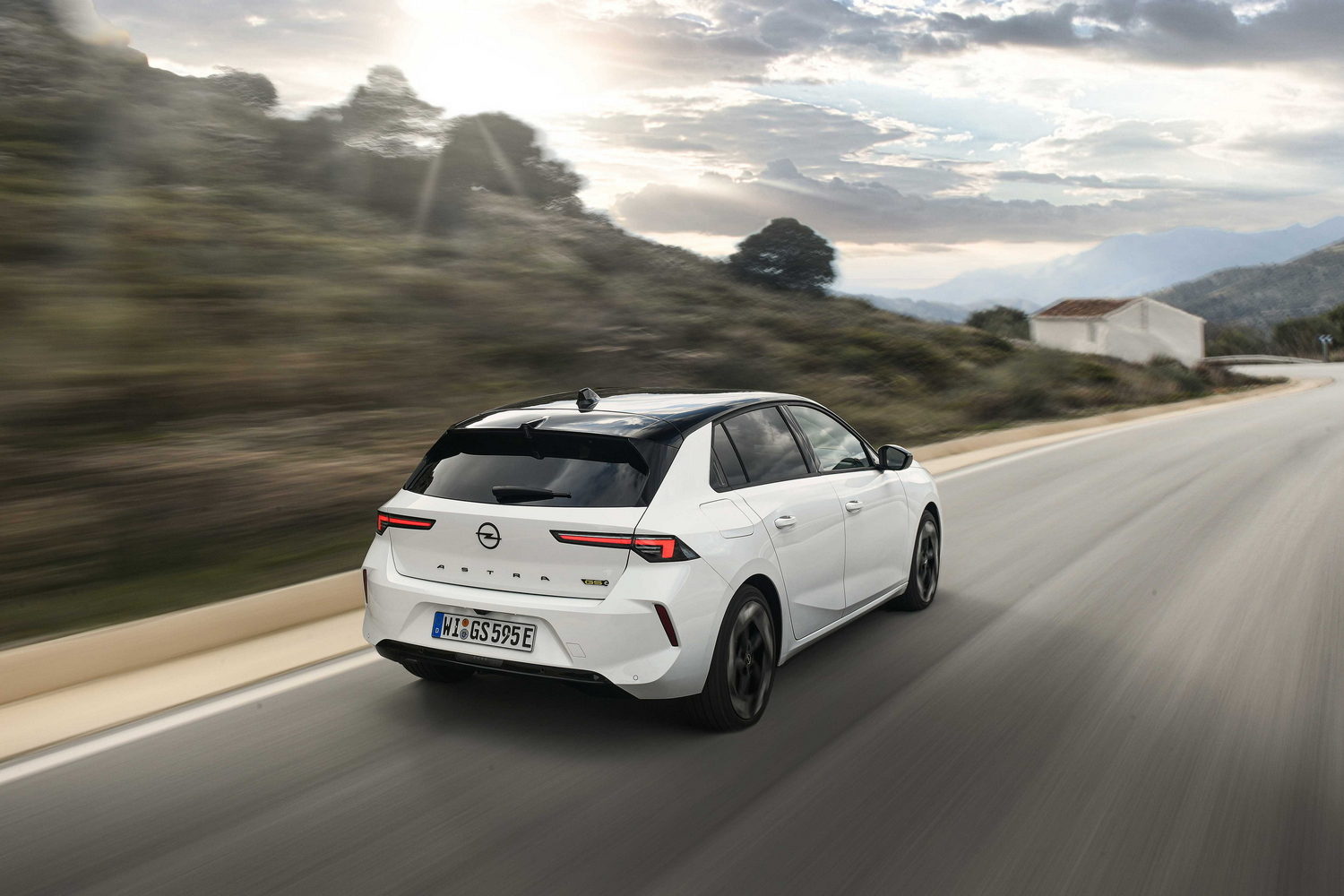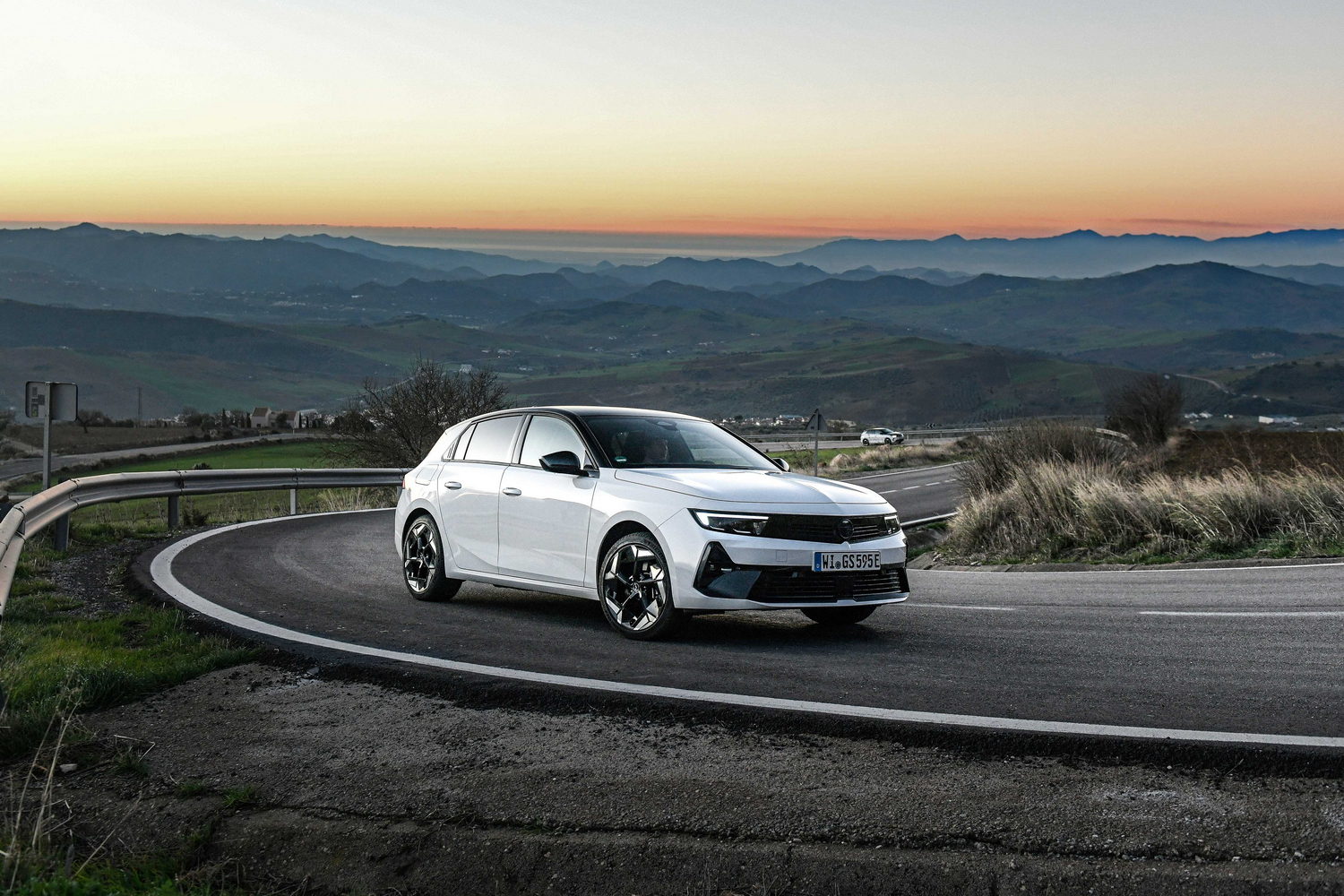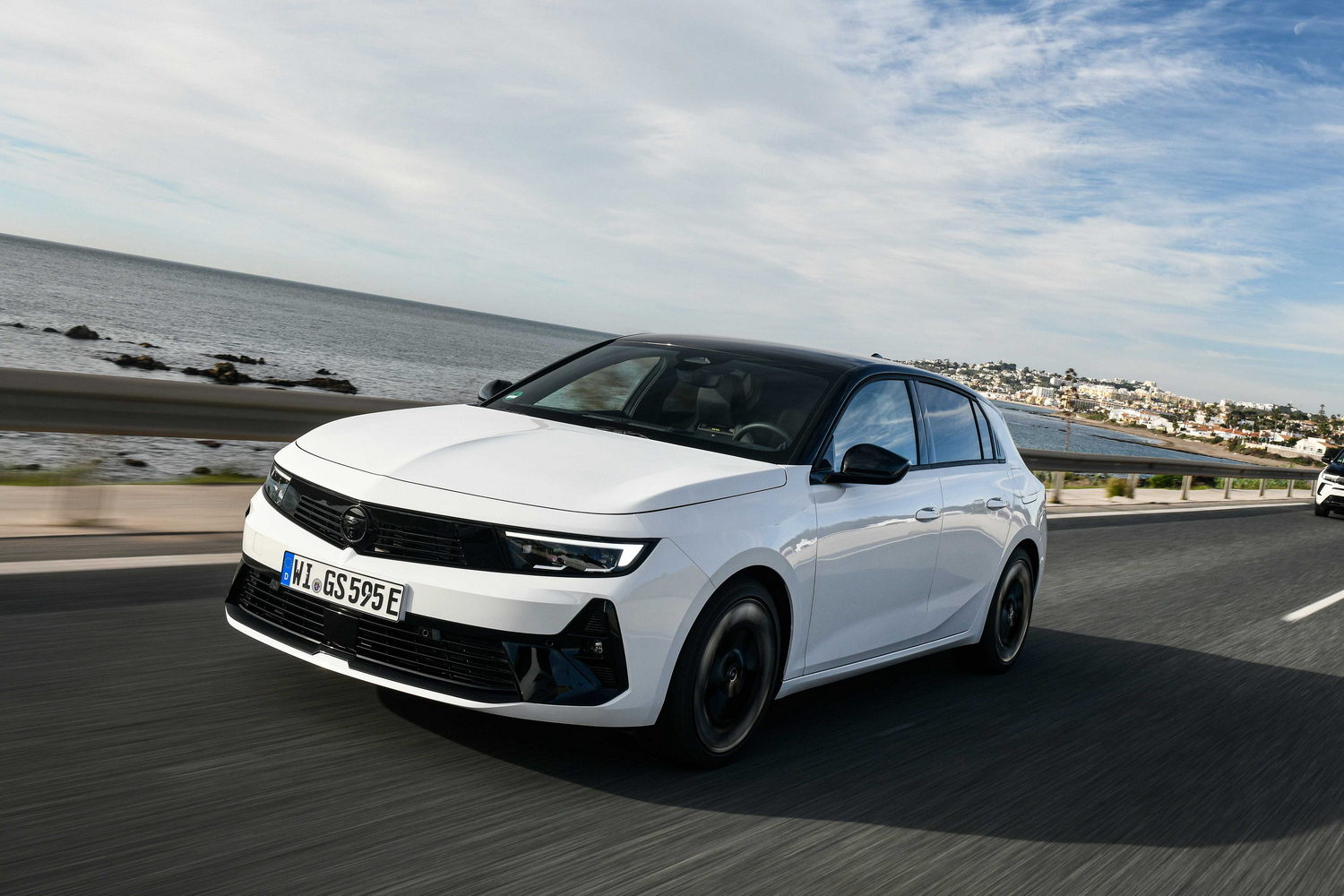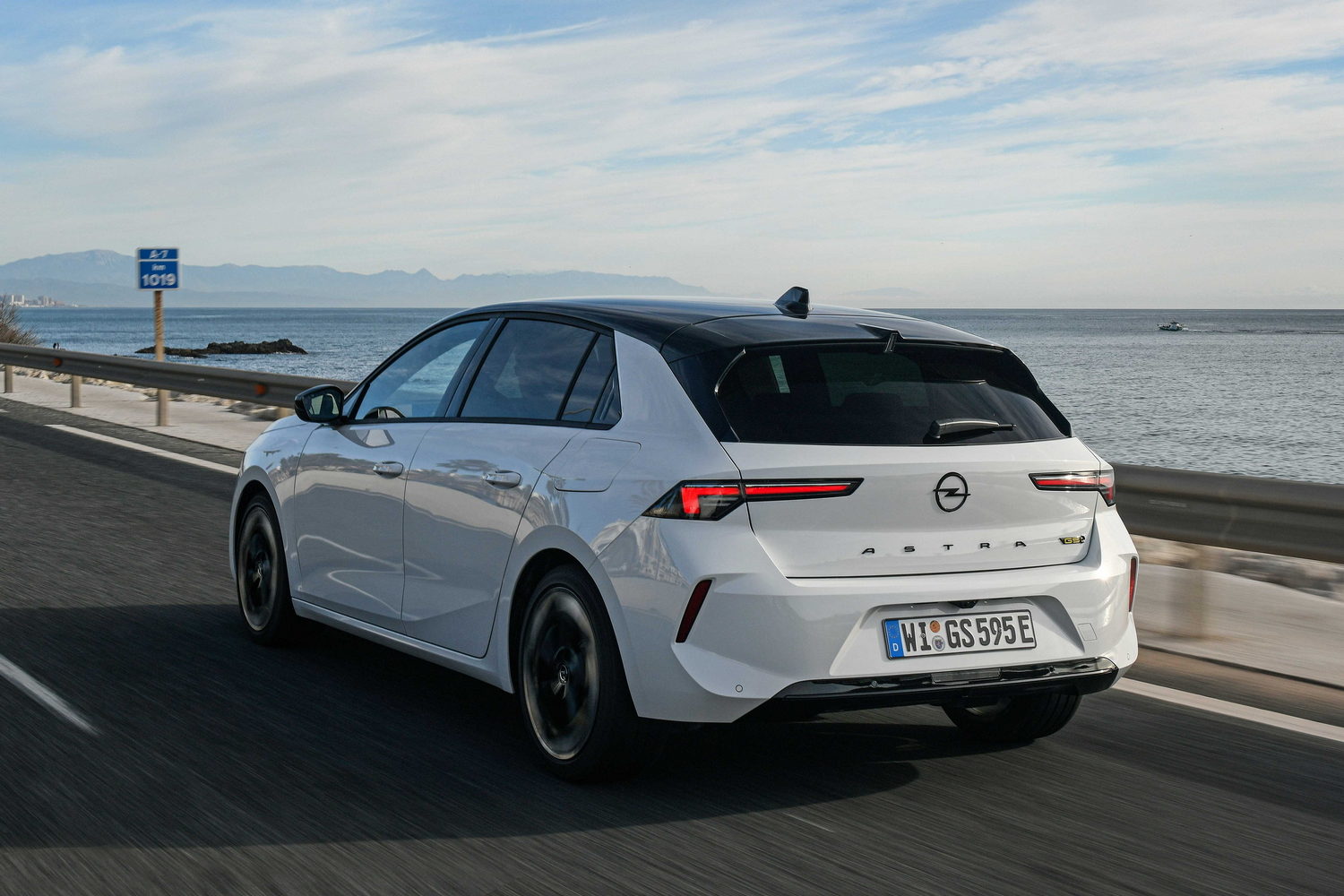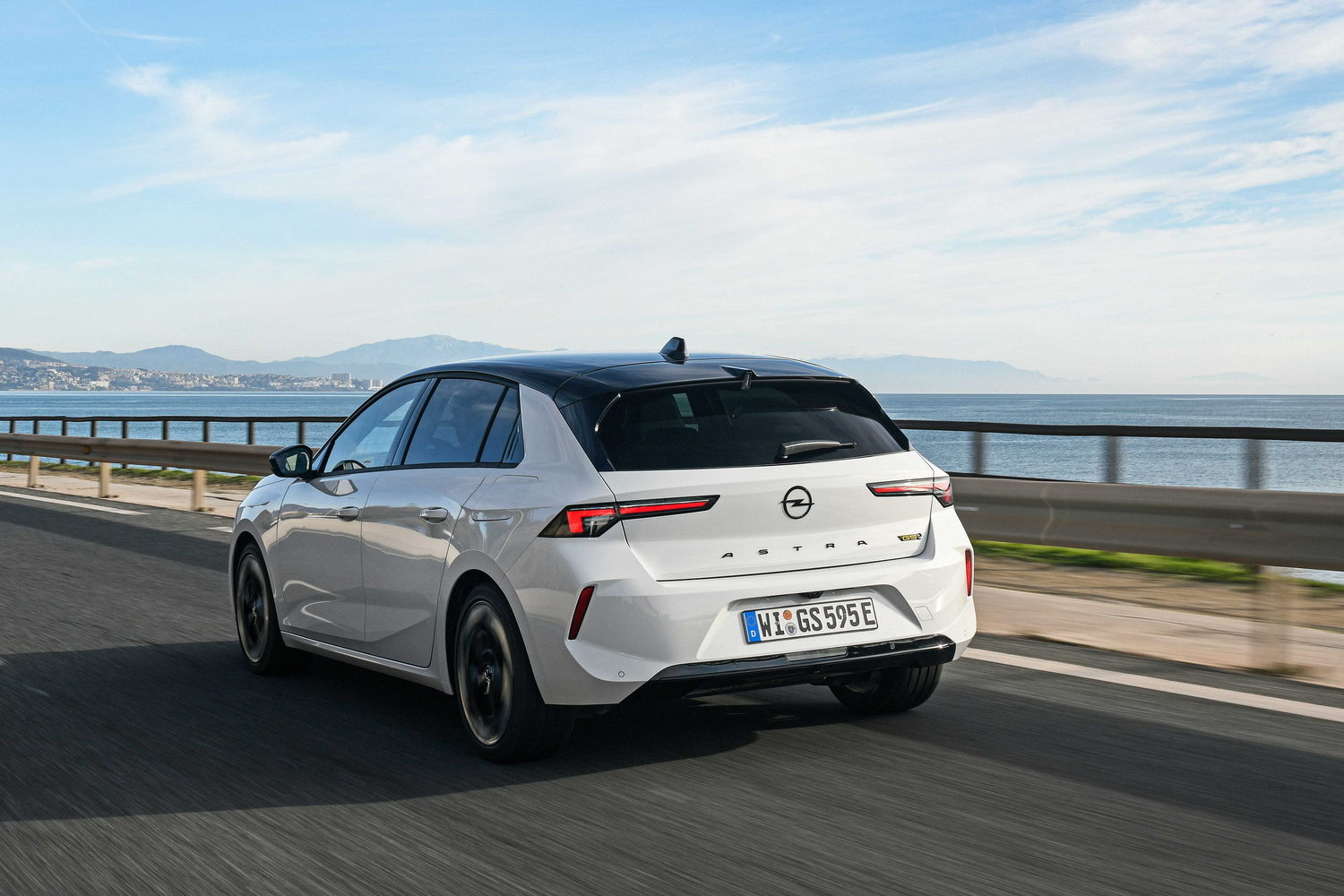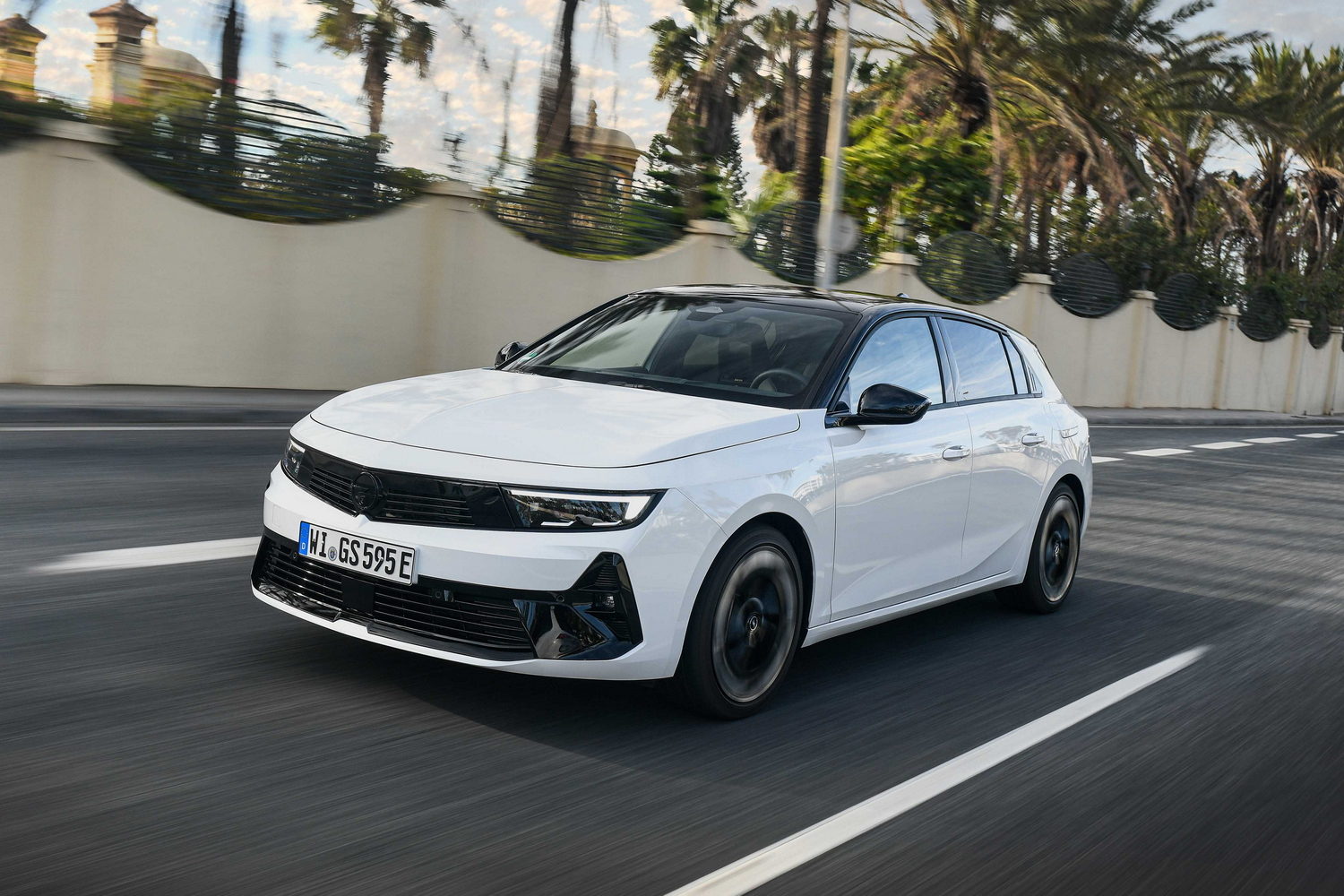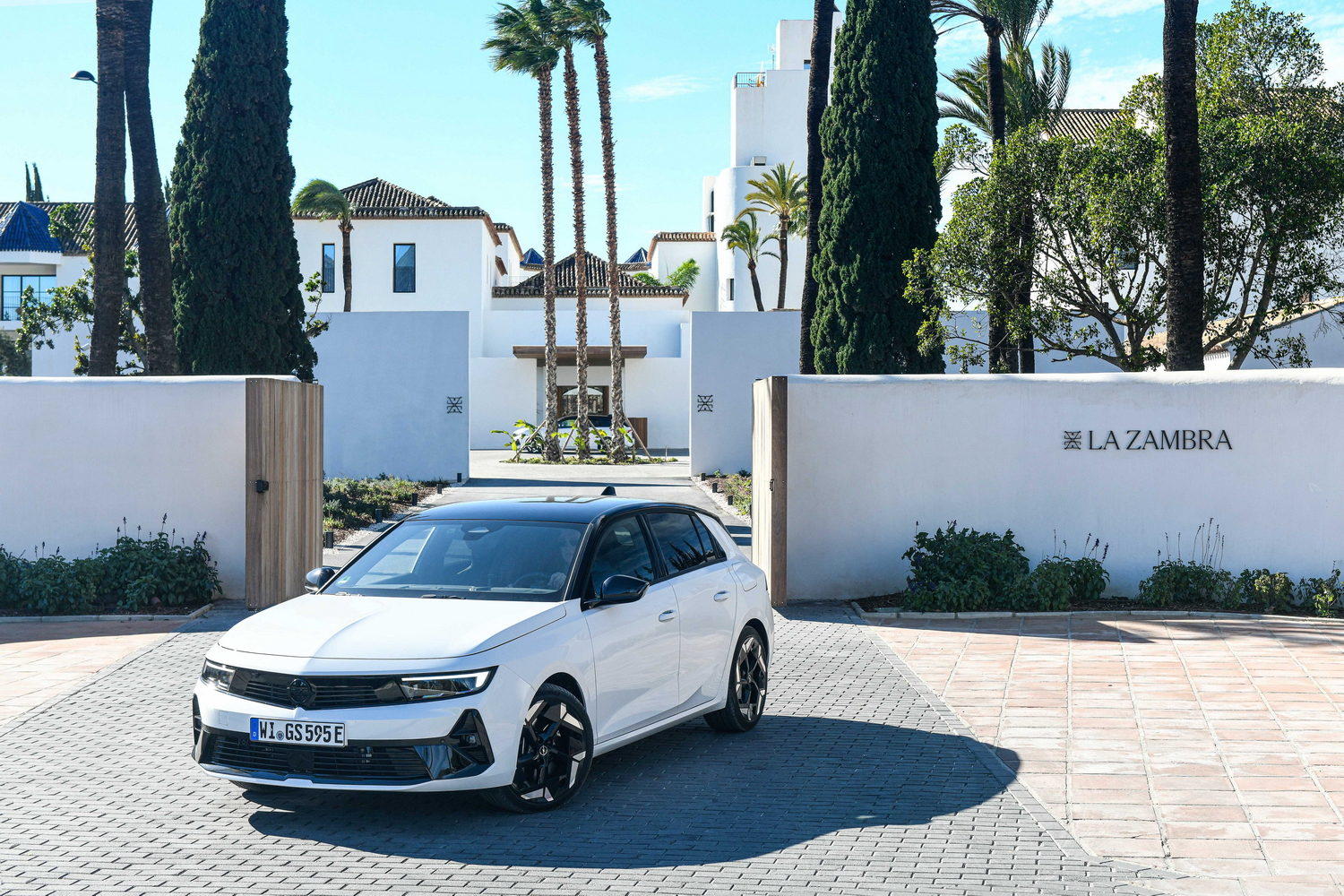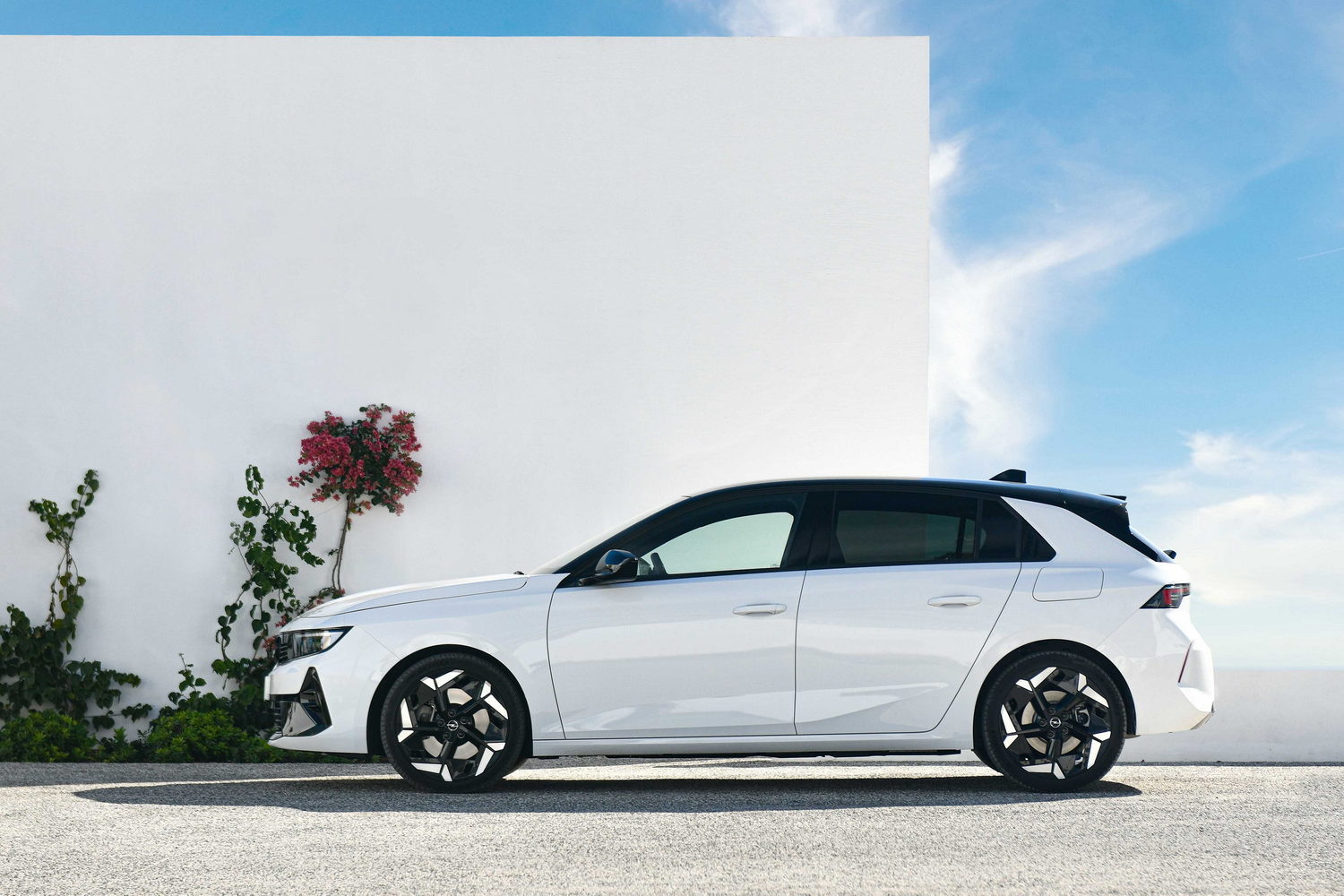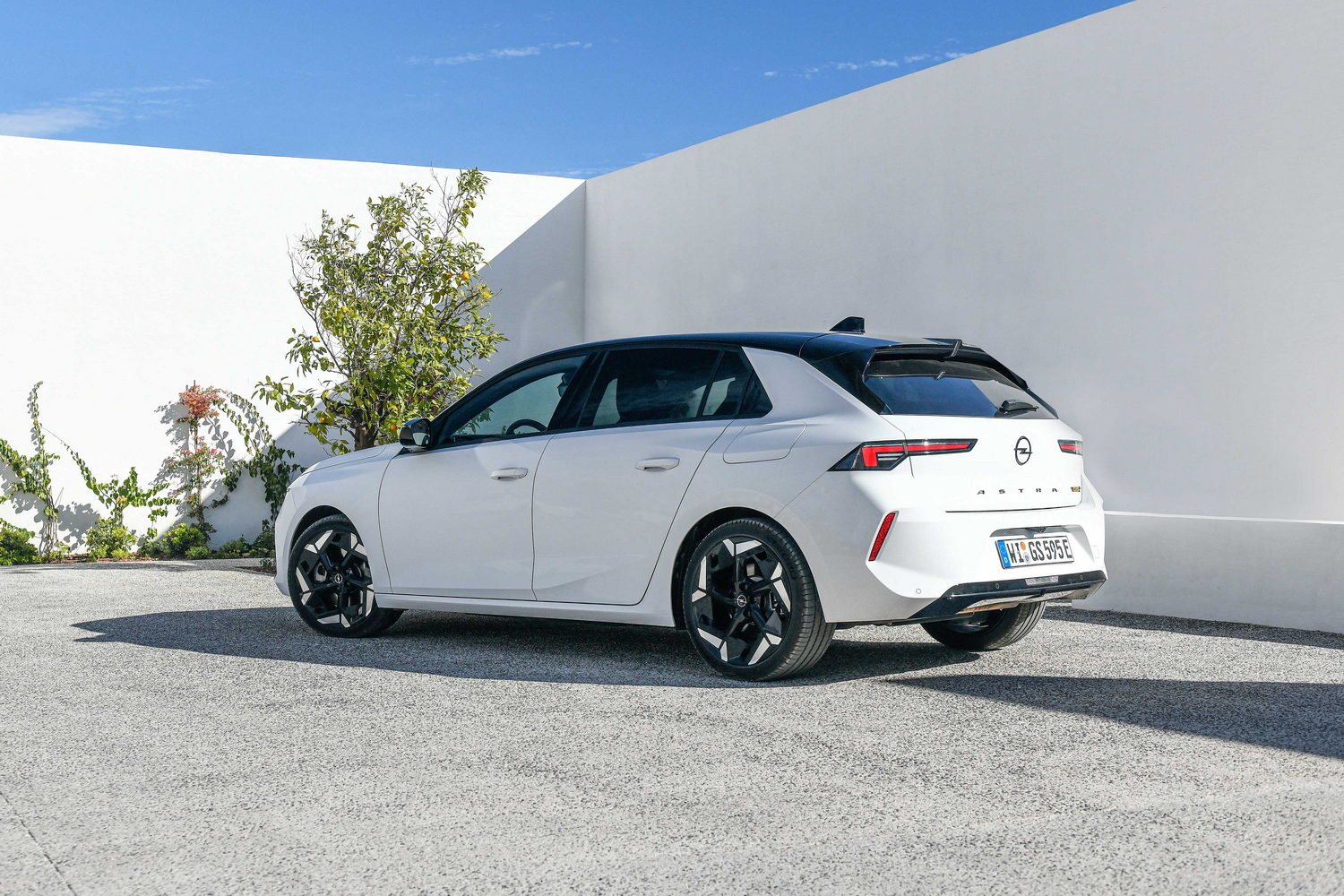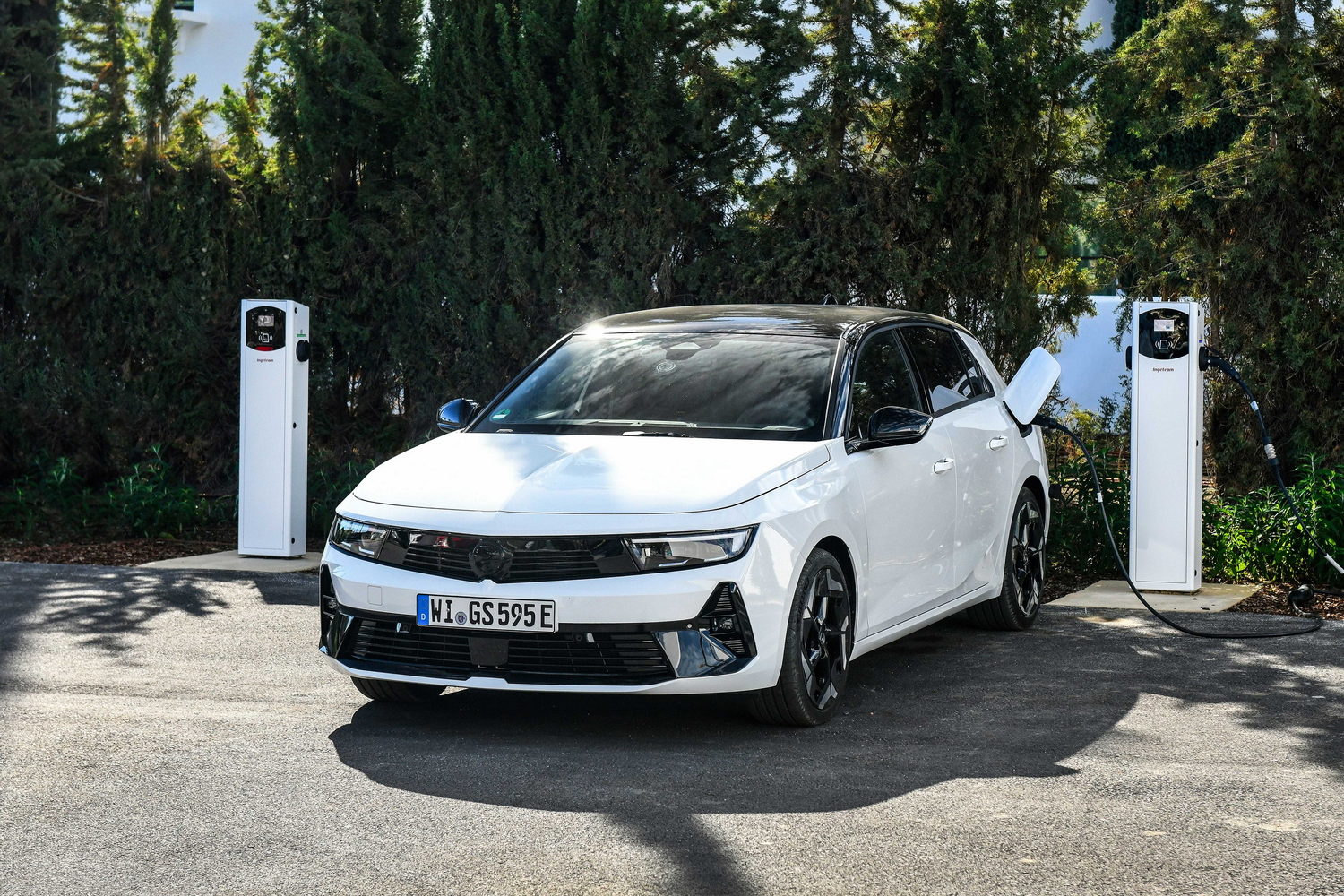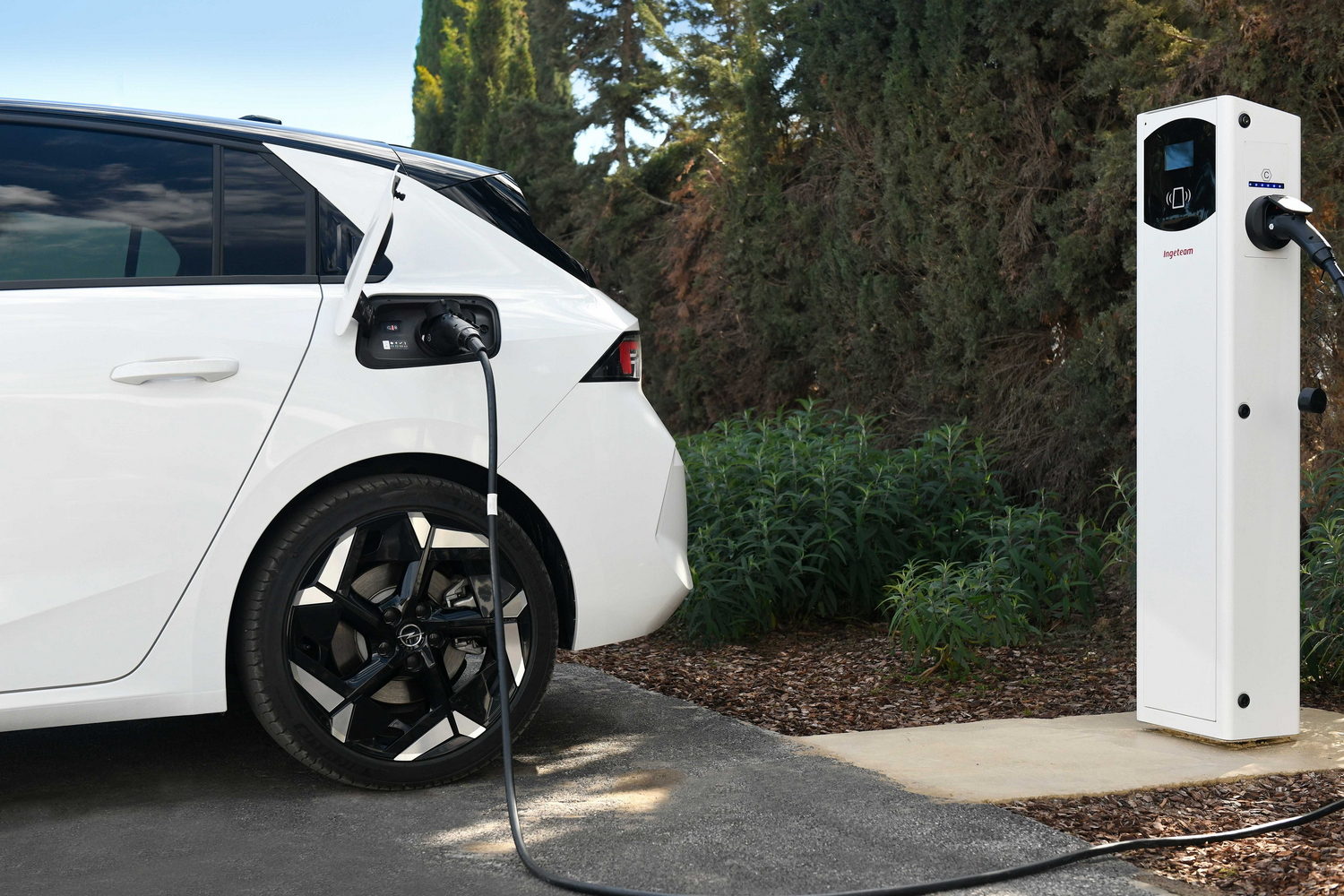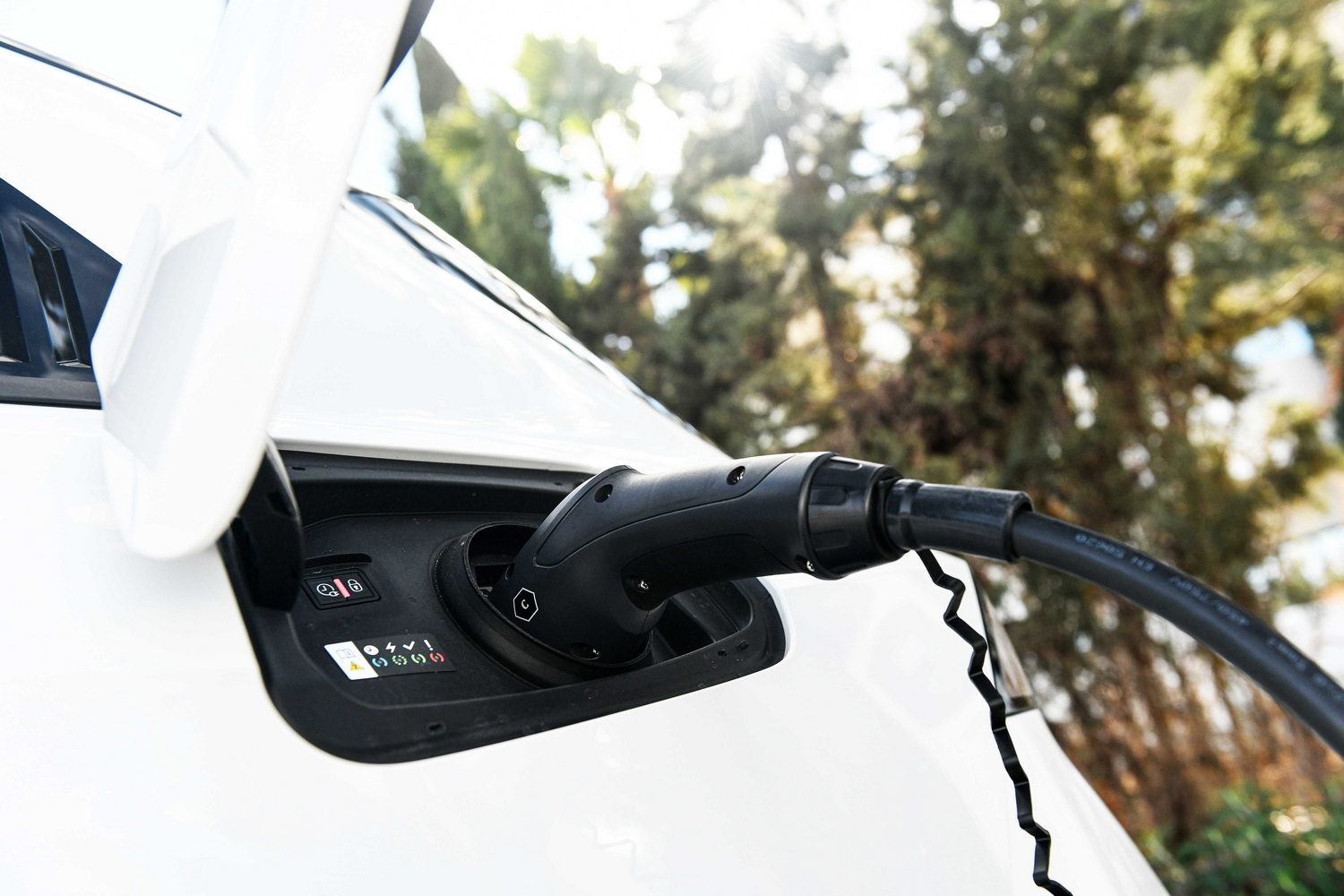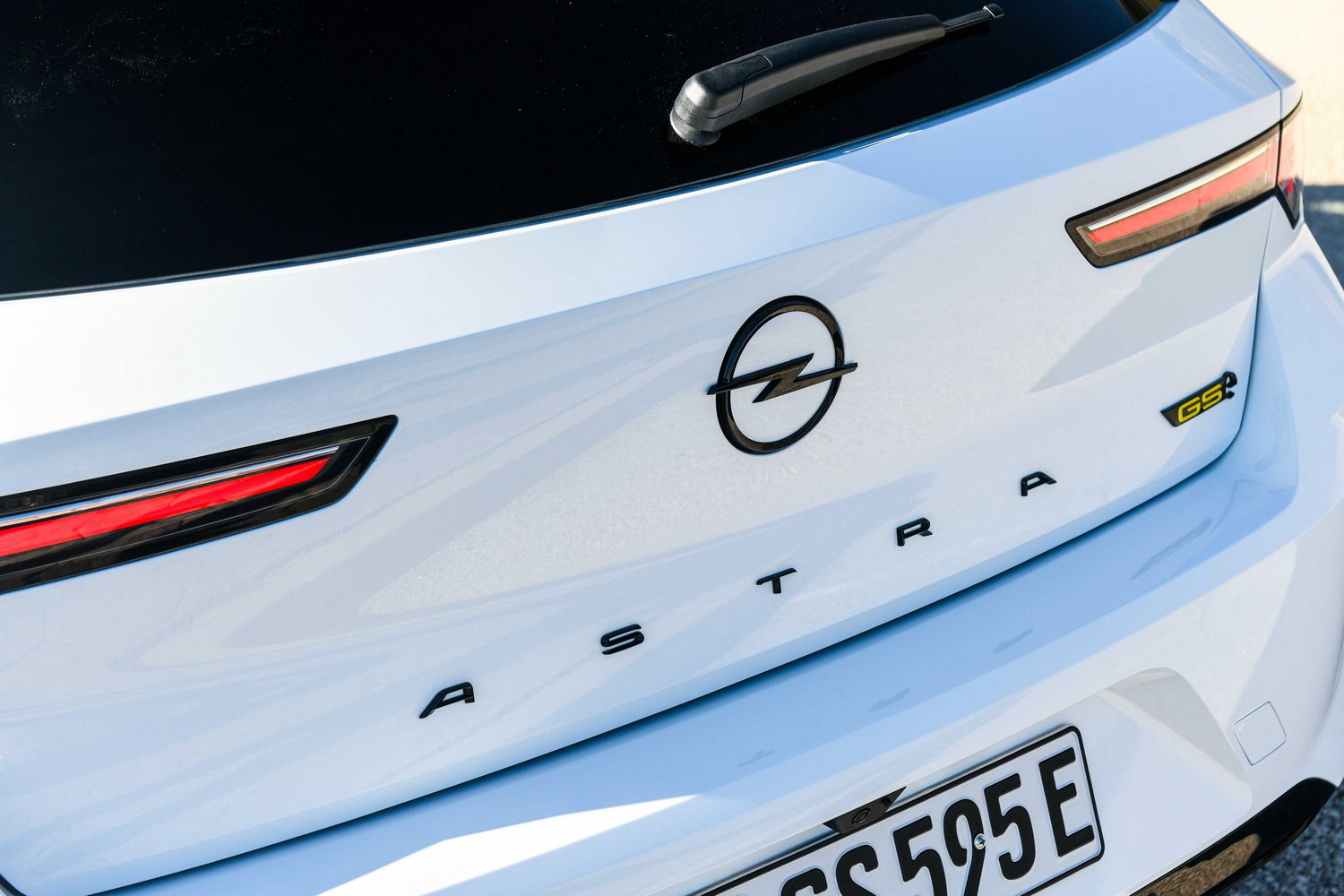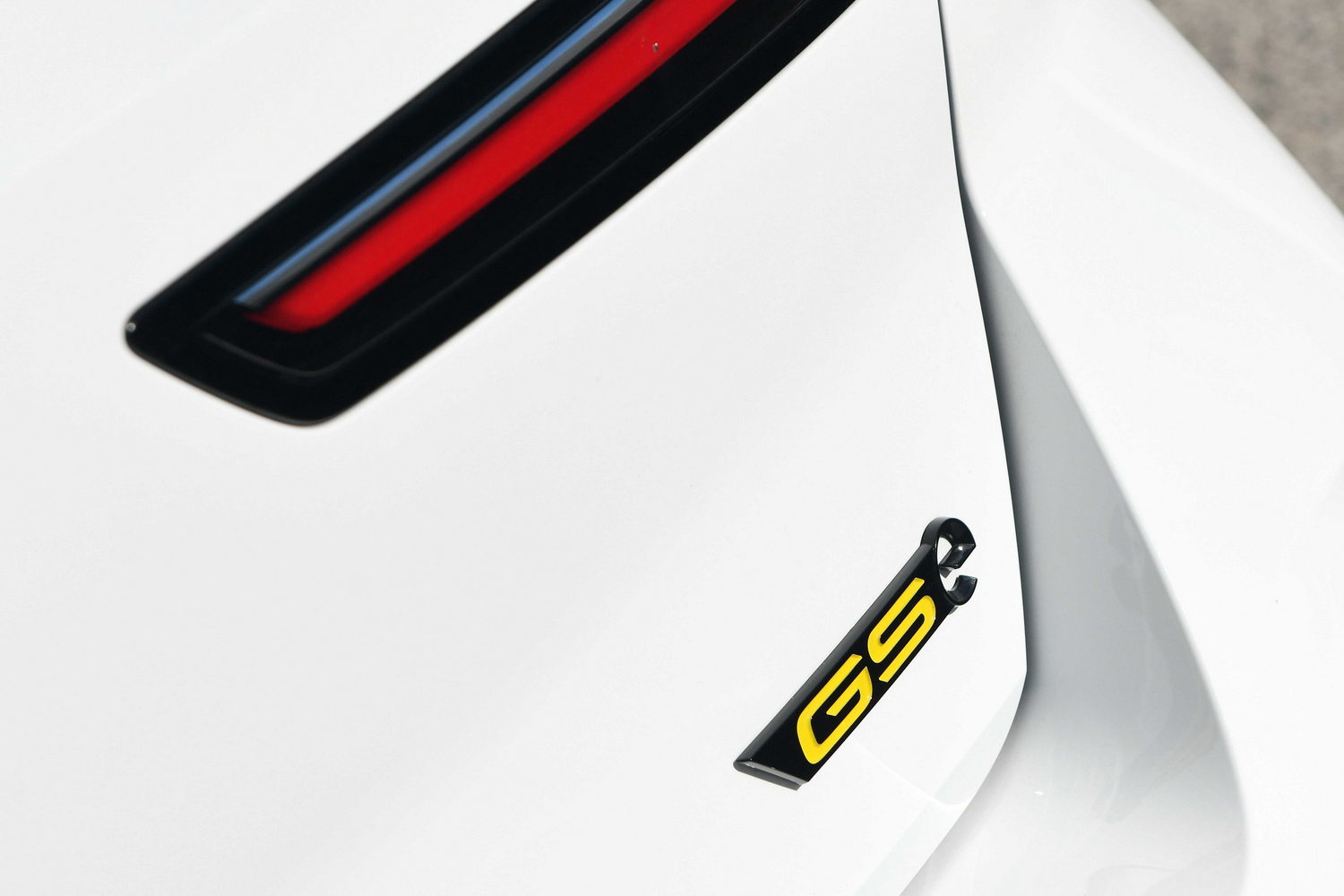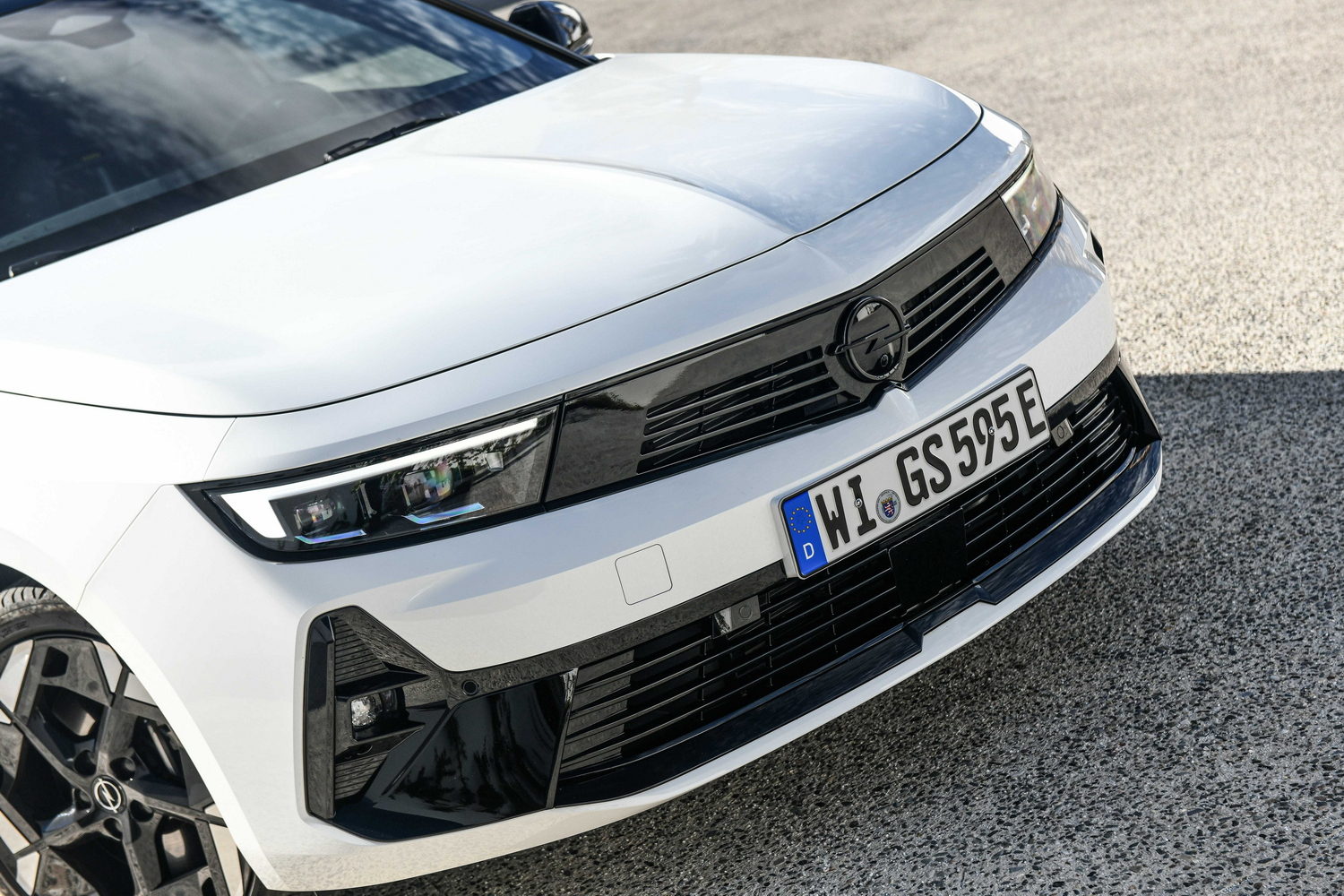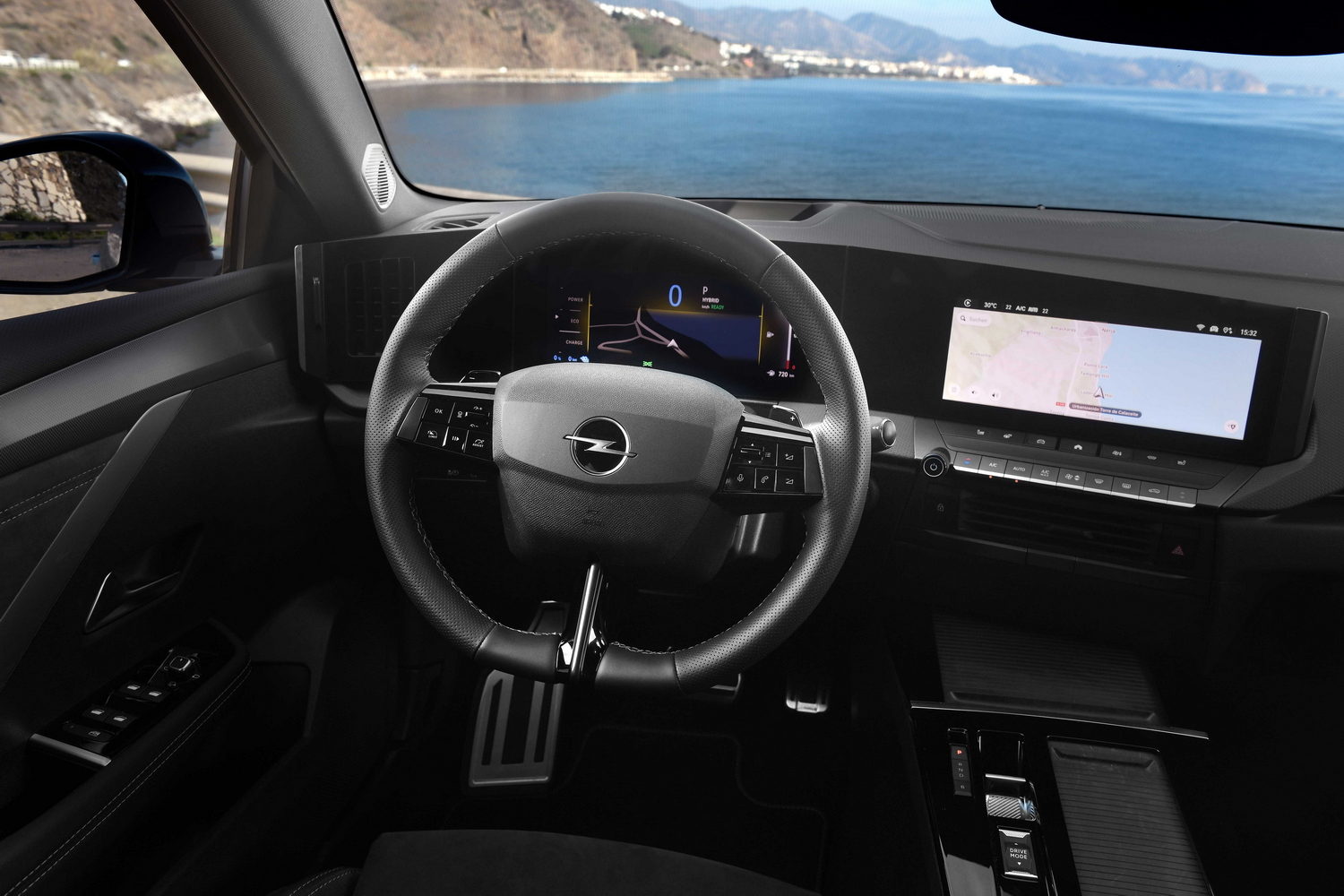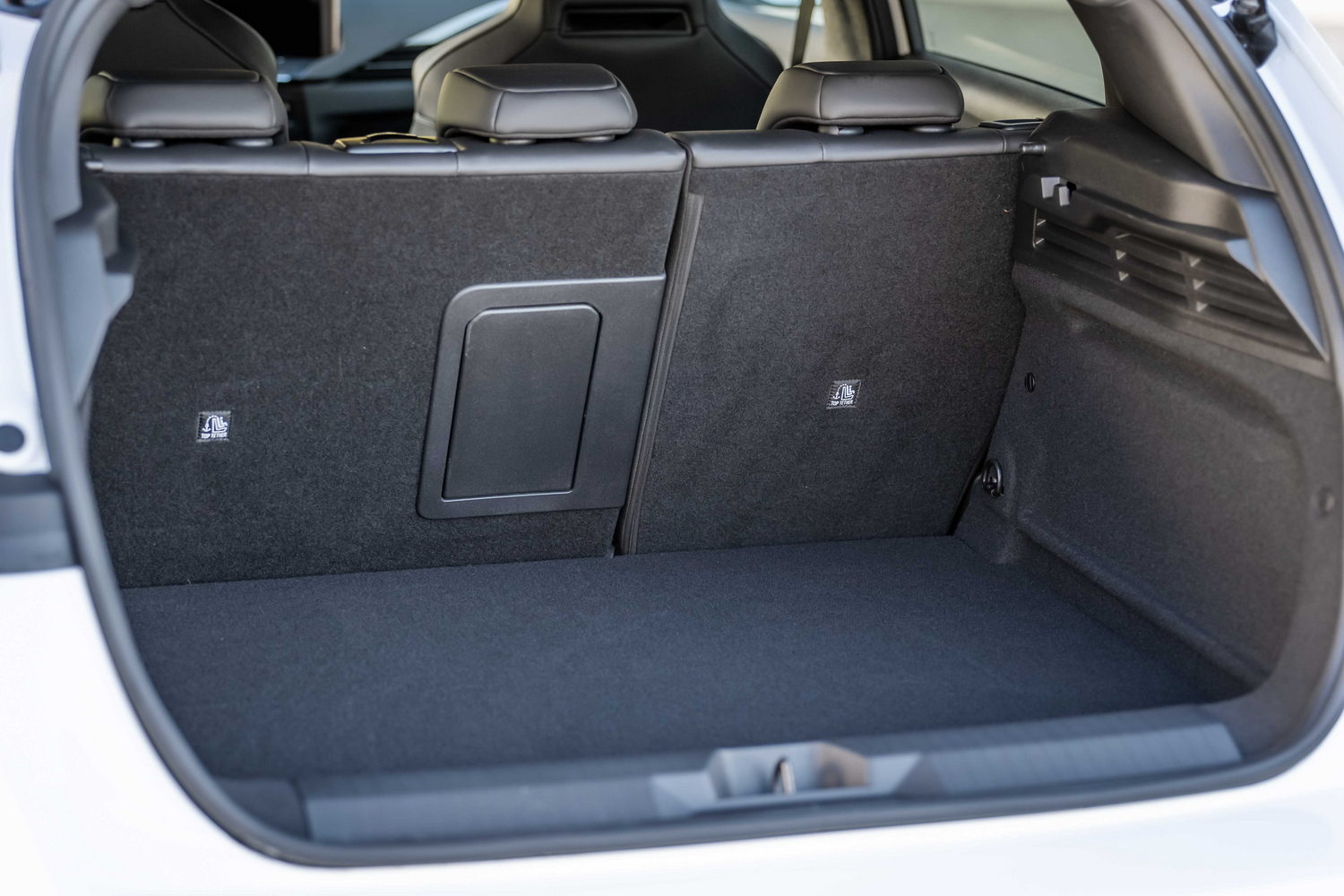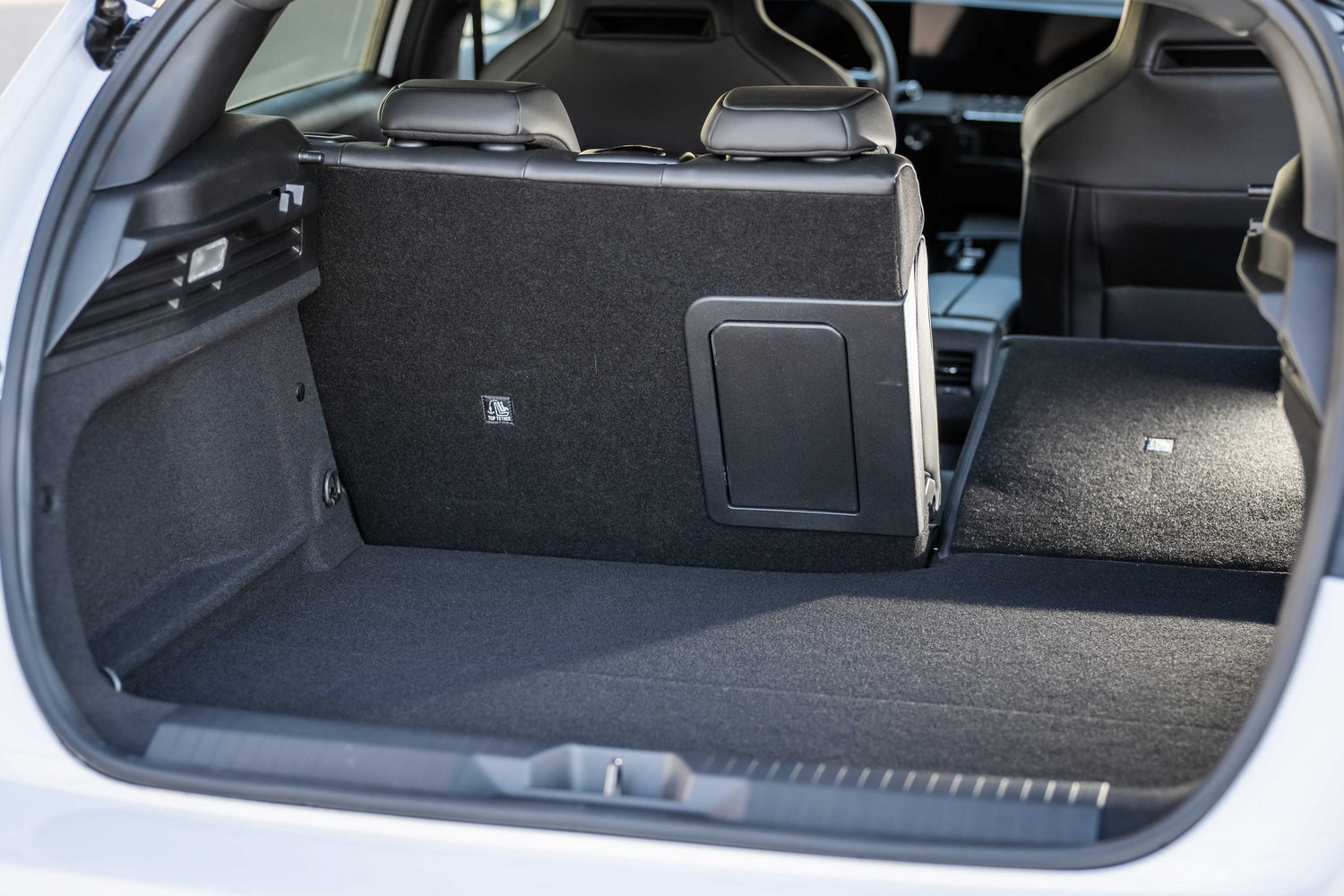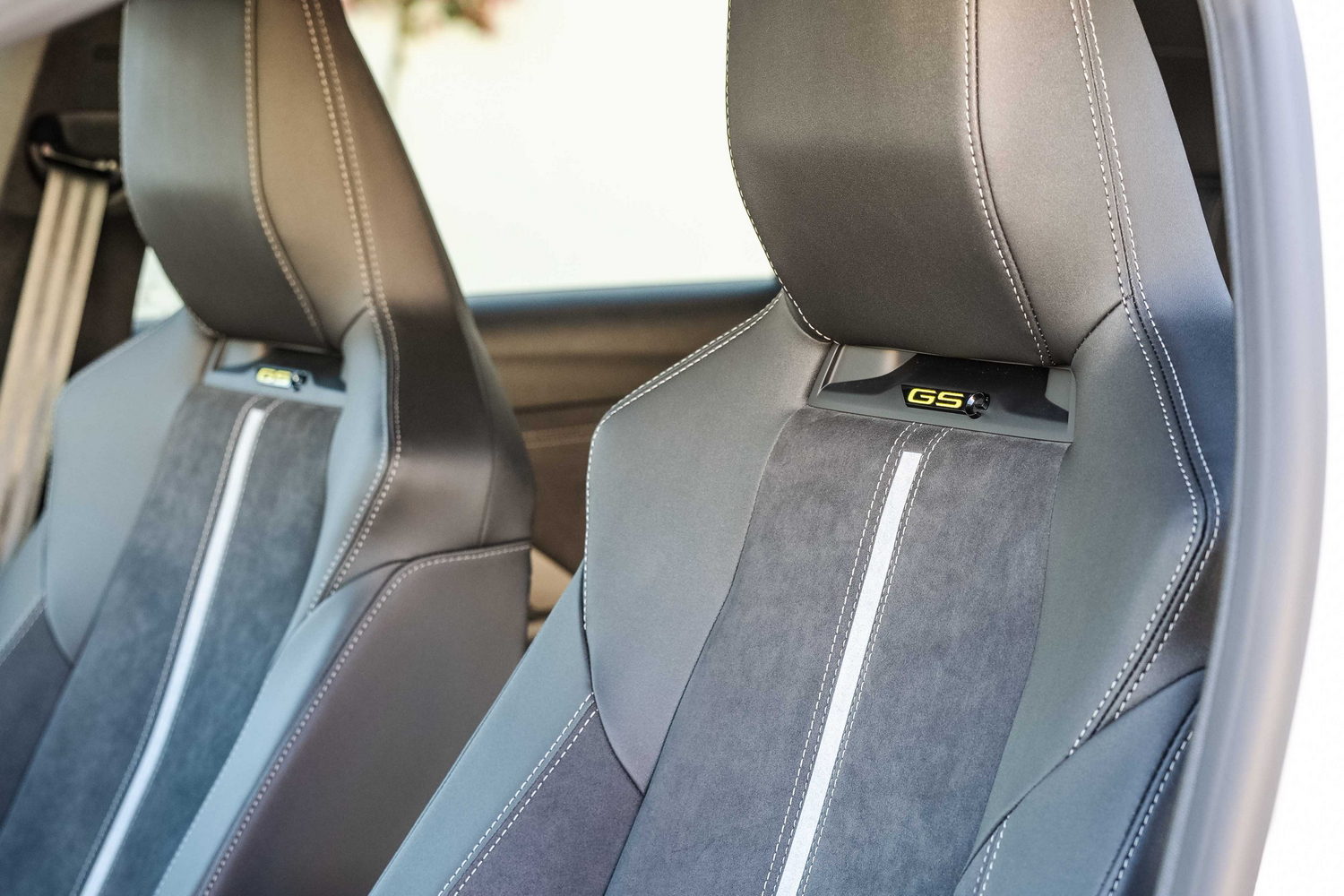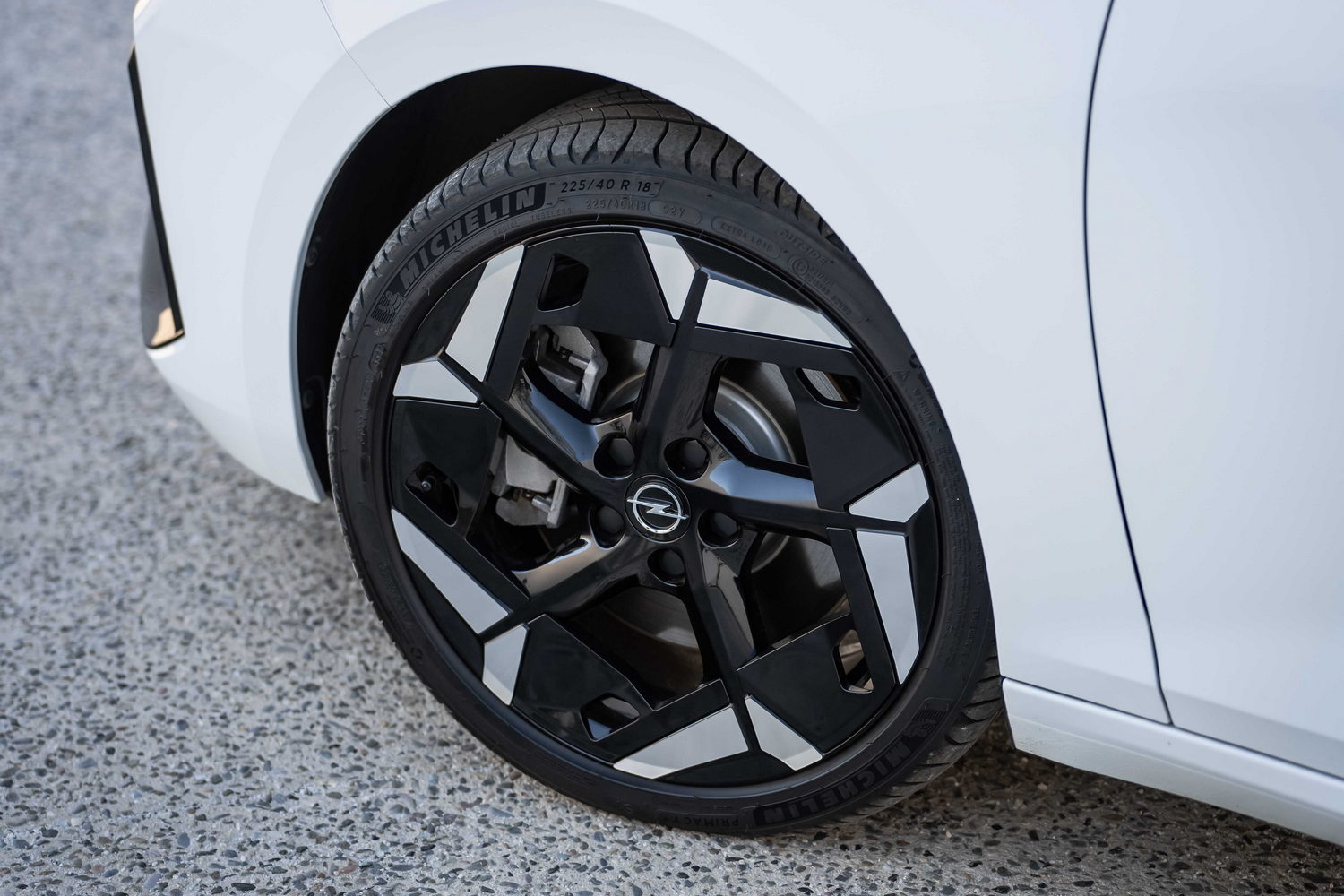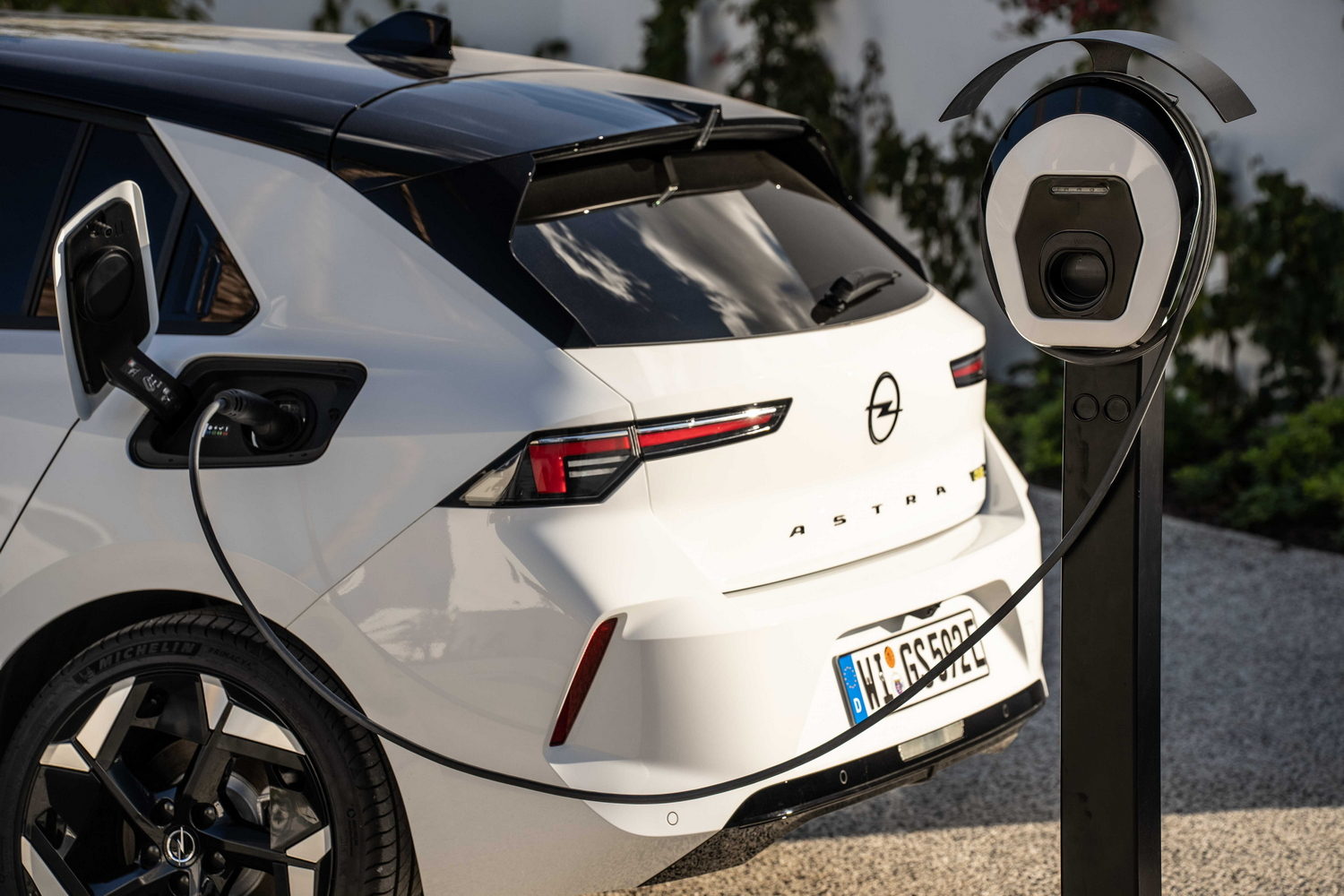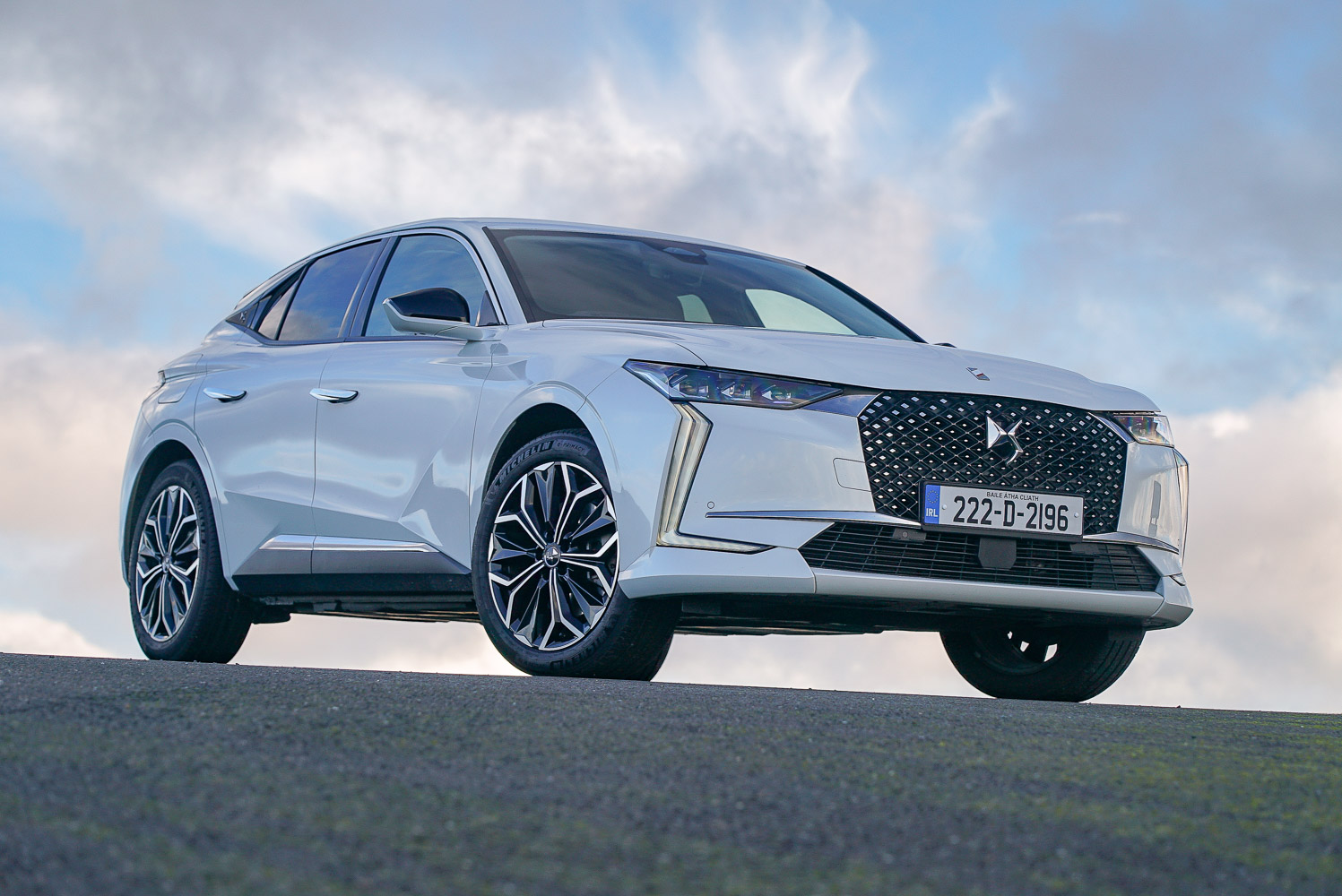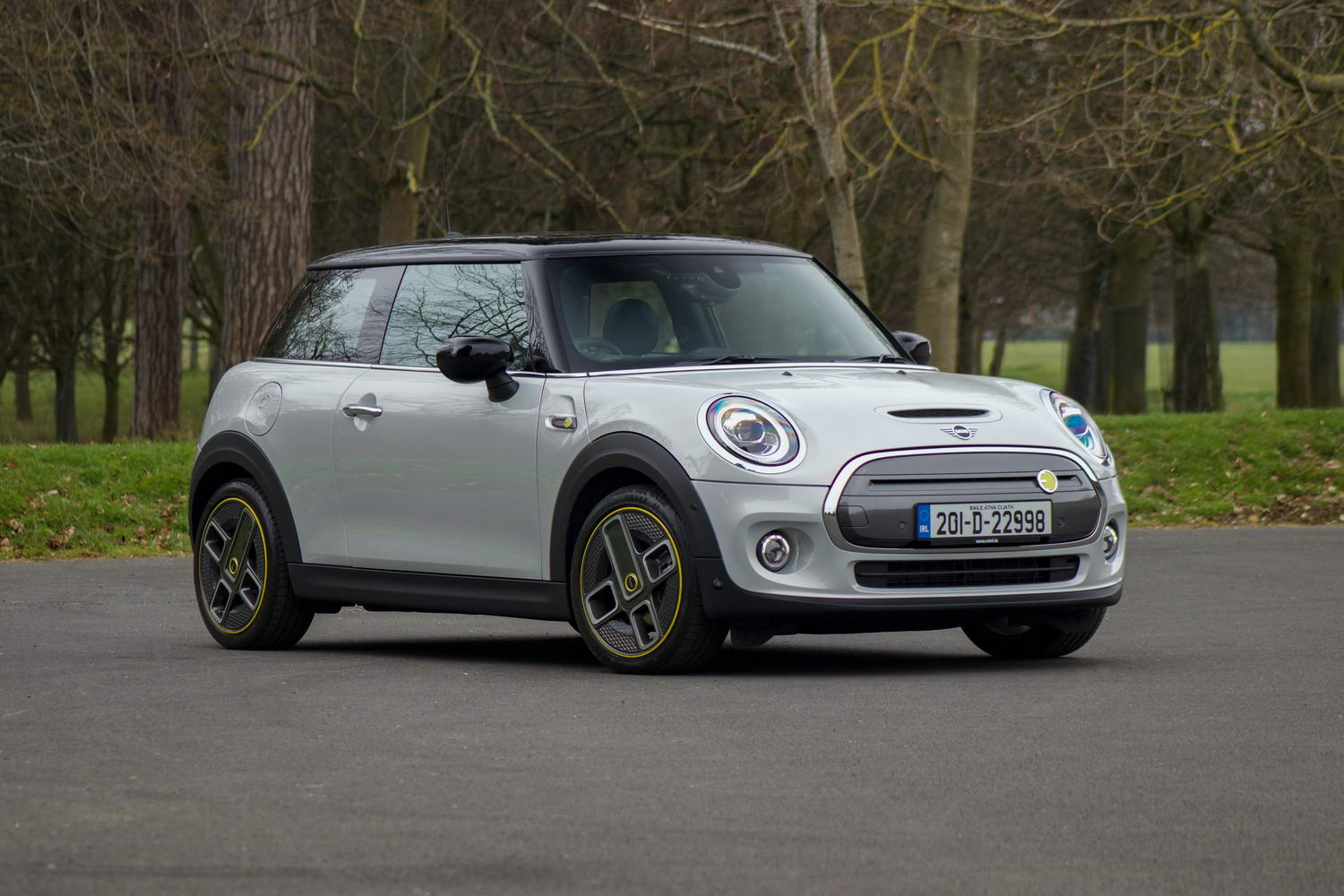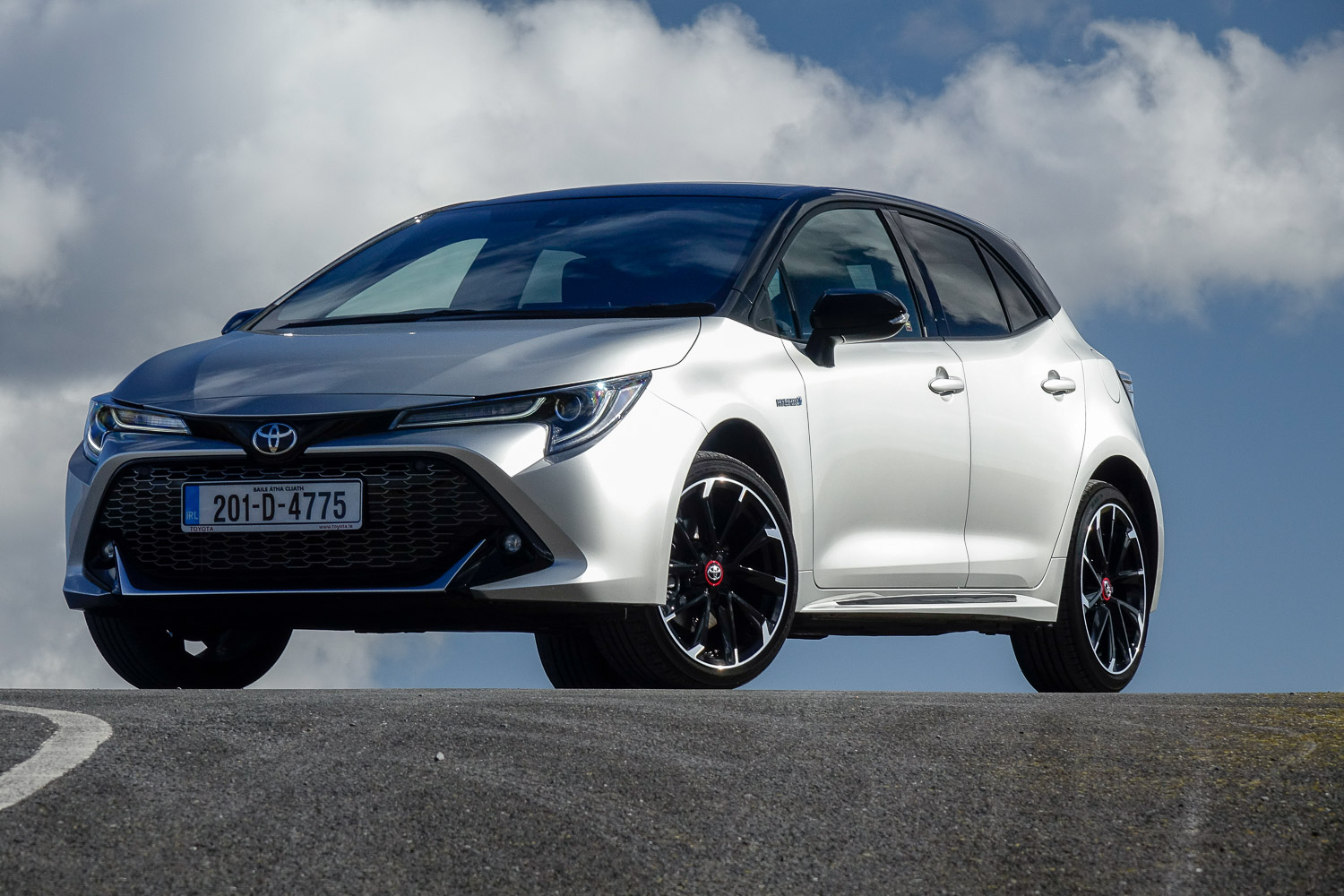The Opel Astra GSe signals the start of a new electrified performance sub-brand from the German marque. Beyond the updated exterior styling there are chassis changes aimed at appealing to keener drivers and a modest bump in power, but is it enough to justify the reinvention of the badge?
In the metal
If you were to create a sporty variant of a hatchback, the current Opel Astra isn't a bad place to start. The latest generation looks good even in its most basic specifications, so this range-topping GSe version has all the right ingredients to turn a few heads. What is perhaps a little surprising is how subtle Opel has kept things. There is a new bumper design, which is easy to spot against the white paintwork of our test car, where a larger contrasting black area spanning the lower bumper section gives a sense of width. It makes the intake area appear larger than it is while tying in nicely with the 'Vizor' grille panel that houses the headlights and additional cooling vents.
As standard, there are exclusive 18-inch alloy wheels that draw inspiration from those fitted to the one-off Manta GSe ElektroMod car. Incorporating aerodynamic features, the black and machined face of the wheel looks pretty distinctive. The GSe exterior specification includes contrasting black door mirrors and roof, similar to higher-spec Astras. Around the rear, there is a small black diffuser, though as this is a plug-in hybrid, and with Opel keen to promote the electrification aspect of the GSe line, there are no visible exhaust outlets. The only GSe badge on the outside is affixed to the tailgate, which lifts to reveal 352 litres of luggage capacity.
Peer inside the driver's door and you'll spot some snazzy new sports seats that have a high level of quality to them. There's the GSe logo on an insert on the seatbacks, but that's the only time you'll see that logo anywhere else inside the car. It's a tad surprising that even when you turn on the ignition there isn't a unique GSe start-up screen, nor is there a badge on the steering wheel to remind you that you've got a more special Astra. The rest of the interior is solidly built, but the lack of any bright colours is obvious. Given that yellow appears to be the signature accent hue for the GSe brand, it's a shame there isn't a flash of it anywhere inside. At the same time, the glossy piano black finish applied to the centre console unit between the front seats is so easily scratched and tarnished that it will prematurely age the cabin by years.
Those in the rear seats get quite reasonable levels of room, so long as they're in the outer seats, as the aforementioned centre console takes away some space for whoever is in the middle. Besides being a little dark on account of the interior materials, it's pleasant to travel as a passenger in the back.
Driving it
It's important to understand precisely what the GSe sub-brand is and perhaps, more critically, what it isn't. The high-performance OPC division is no more, at least for now, and while some may see the GSe (Grand Sport Electric) taking over, it's much closer to the GSi line that Opel had with the previous generation Corsa and Insignia. These were cars that filled a gap between the standard models and OPC, a sort of halfway house to performance. That's almost the same scenario here, except in the new world of electrification.
With that in mind, the chassis engineers in Opel have tweaked the steering setup to create a more involved feel for the driver, while FSD (Frequency Selective Dampers) from Koni are used in a bid to enhance the ride quality by spanning comfort at lower speeds and stability and precision at higher paces. The ride height is also decreased by 10 millimetres. Over the empty mountain roads of our test route the difference the new suspension components made is tangible, though not quite the night and day effect you might think. They indeed remove any busyness from the suspension and reduce the impact of sudden direction changes on the car's balance. The grippy Michelin tyres, it should be mentioned, help to steer the car's nose more precisely.
The plug-in hybrid system has an increase in performance to a combined maximum of 225hp (the regular Astra PHEV gets 180hp) though it's worth noting that versions of other Stellantis cars, such as the DS 4, also have the same 225hp output. It's not exactly rapid away from rest, taking 7.5 seconds to accelerate to 100km/h, though that figure isn't the be-all and end-all of this car. You can opt to drive it in pure electric mode, with the battery officially providing up to 64 kilometres of range. Getting more than 40 kilometres is realistic and the electric motor has plenty of power, so it never feels slow in an urban environment. Hybrid mode kicks in once the battery's charge depletes, and it ambles around with a reasonable degree of refinement so long as you don't ask for too much too acceleration suddenly from the engine.
Do that and the eight-speed automatic, which is usually well-behaved for most of the time, can get caught sleeping before springing into action. The 1.6-litre four-cylinder engine can rev though it never sounds enticing nor appealing. At times, the transmission hangs onto ratios for far too long. You can shift manually via the paddles. Opel introduces an augmented digital sound of the engine in Sport mode, though you have to activate it within the menu system (perhaps even Opel isn't too fond of it as it was initially deactivated in our test car), but surprisingly, it's not that different.
Across various roads and environments, it becomes clear that the Astra GSe is best experienced at no more than three-quarters pace. Its ride and handling hit a nice sweet spot, but the powertrain is frequently left wanting and will frustrate those who perhaps expected more from a car bearing a performance sub-brand badge.
What you get for your money
As the Astra GSe sits atop the current range, there is a good level of standard equipment. Besides the exterior and interior styling changes mentioned above, there are heated seats, a heated steering wheel and a 360-degree camera system for parking. A suite of driver assistance systems includes front collision with emergency braking, blind-spot assist and automatic speed assistant with stop function. Wireless Apple CarPlay and Android Auto are plusses, though increasingly common as standard nowadays, as is the wireless charging pad. A starting price of €52,695 puts it over €4,000 more than the 180hp Astra PHEV, which is a lot for some wheels, suspension and a bit more power.
Summary
While many will think of the Opel Astra GSe as a sporty variant, it stops short of being anything close to what you might expect from a hot hatch, and that seems like a missed opportunity for the German brand. Yes, it has a tasteful chassis setup that does make it a bit nicer to drive over the standard Astra PHEV, but it's not hugely noticeable, and the performance on offer is no more than what others in the Stellantis family offer within their standard model lines. The GSe brand has potential to be an interesting one, but the Astra GSe doesn't quite hit the spot.

